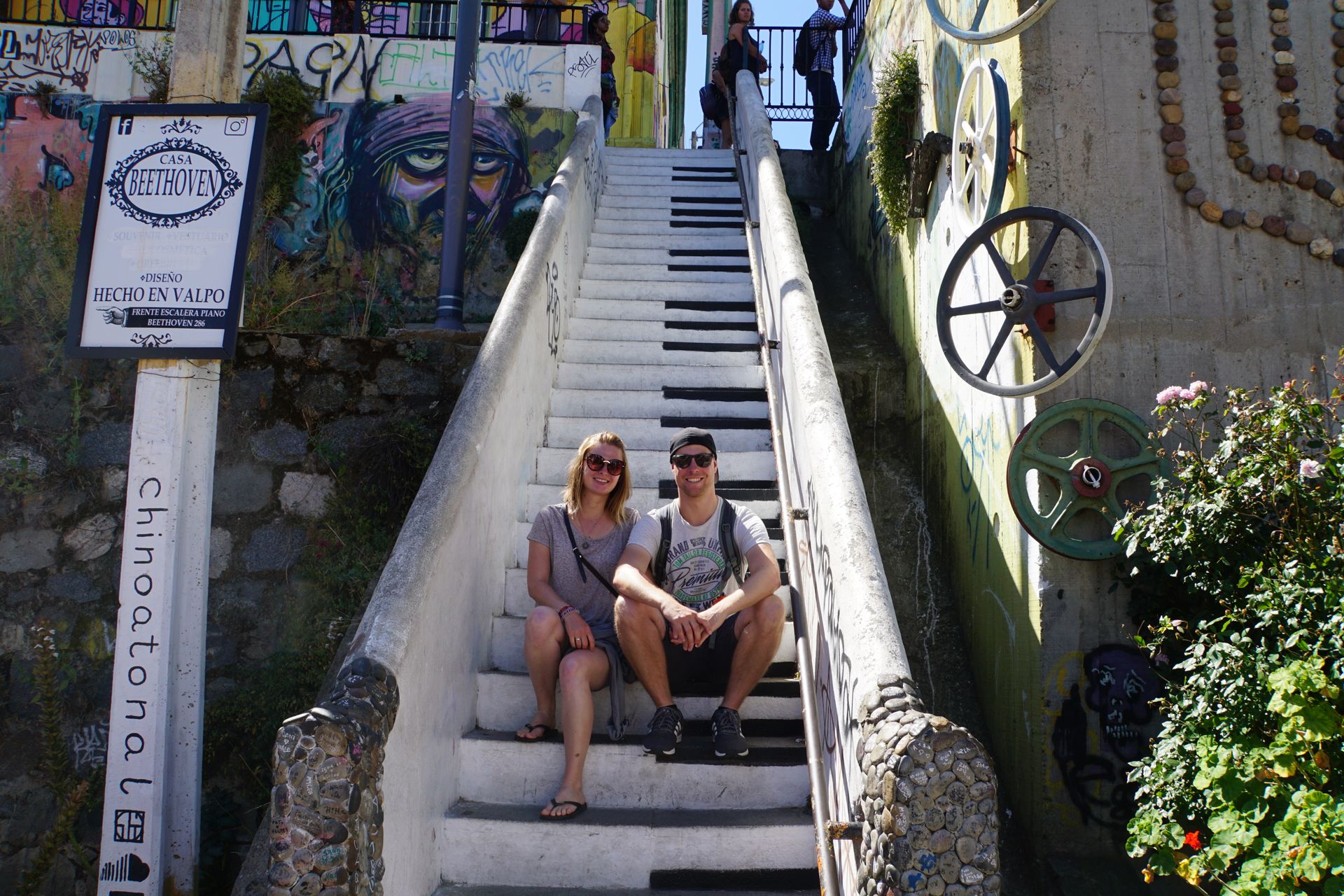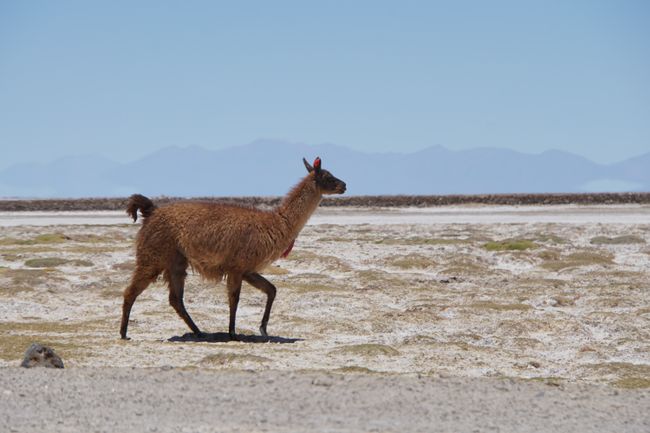Region Angkor and Phnom Penh
発行済み: 18.04.2019
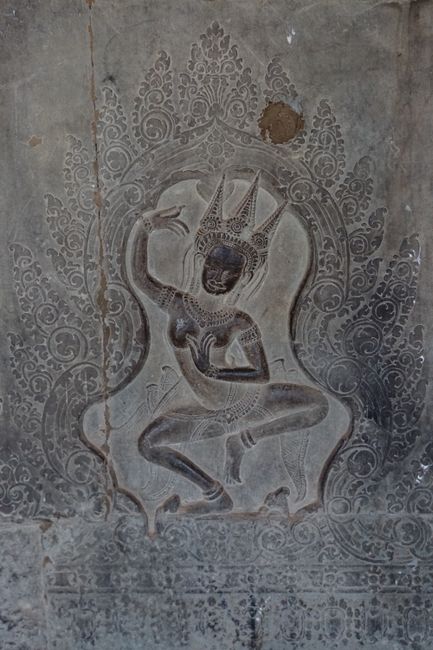
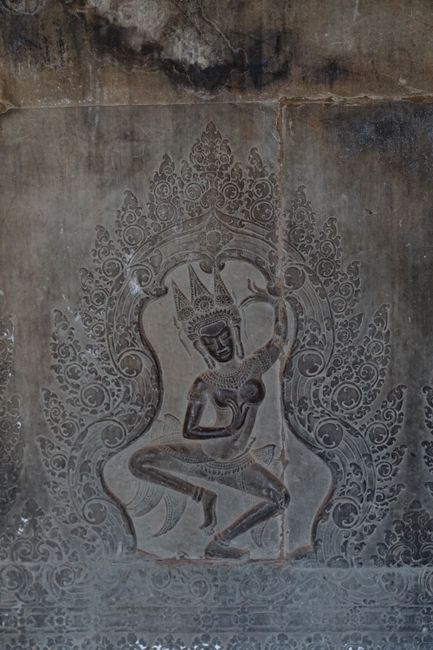
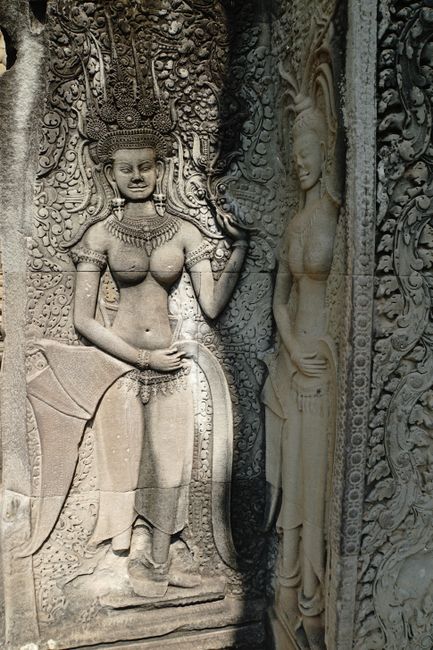
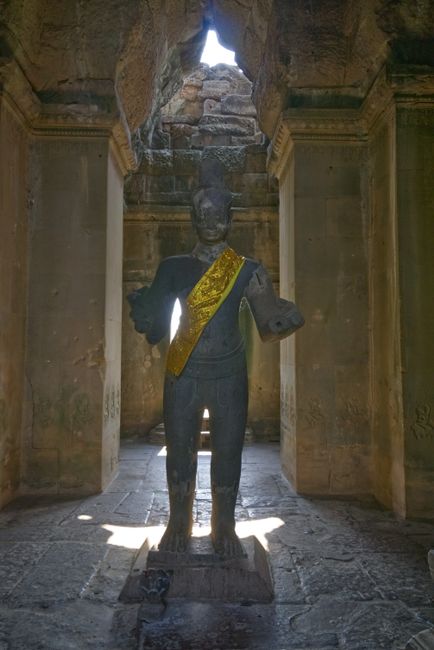
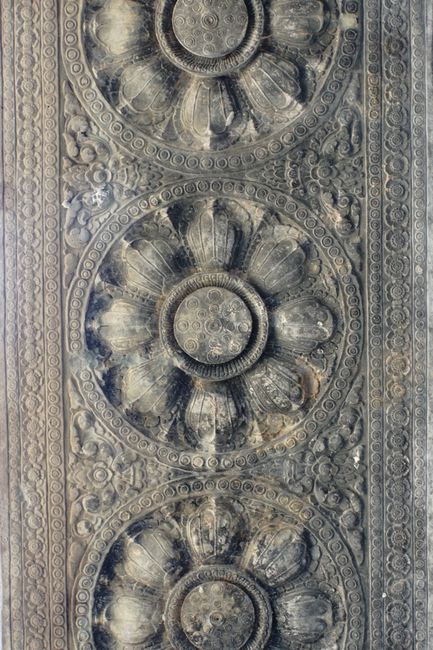
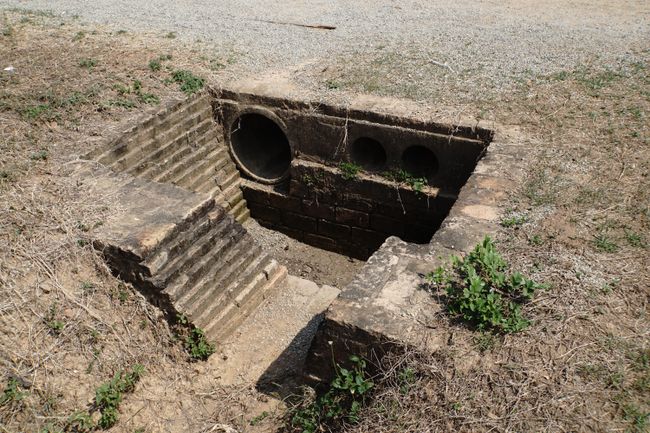
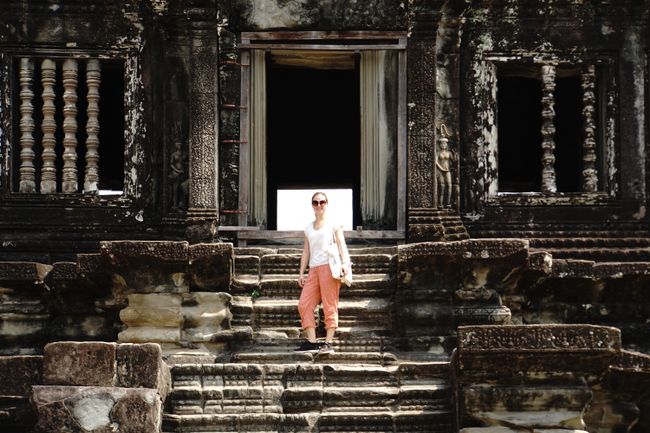
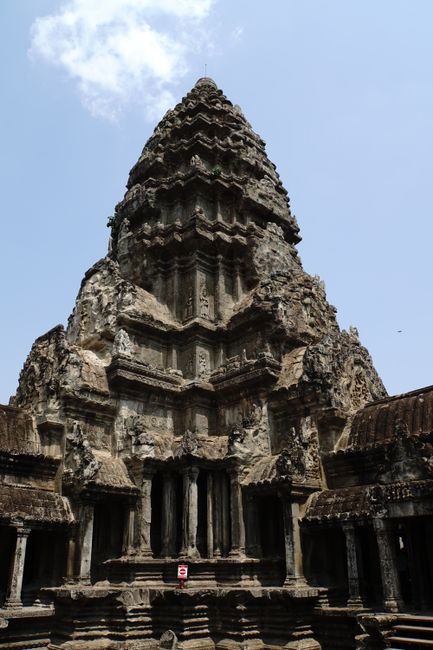
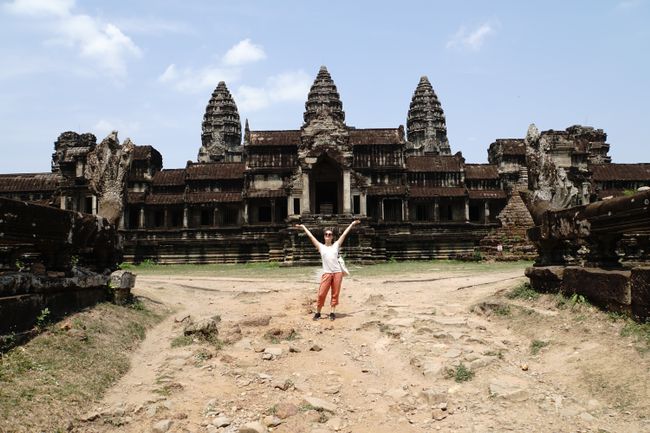
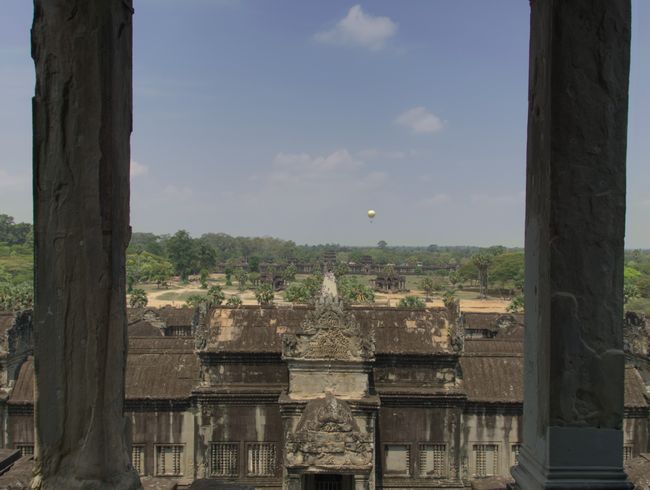
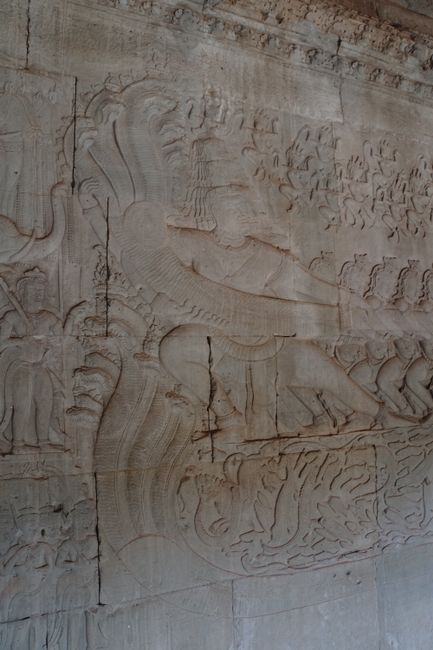
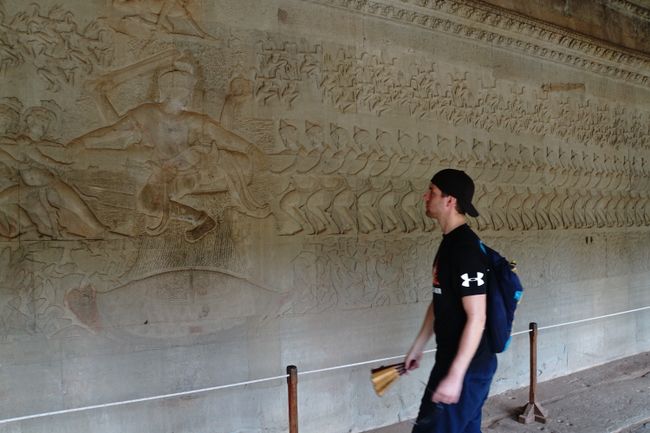
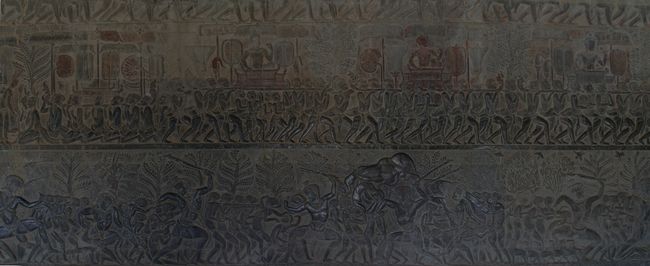
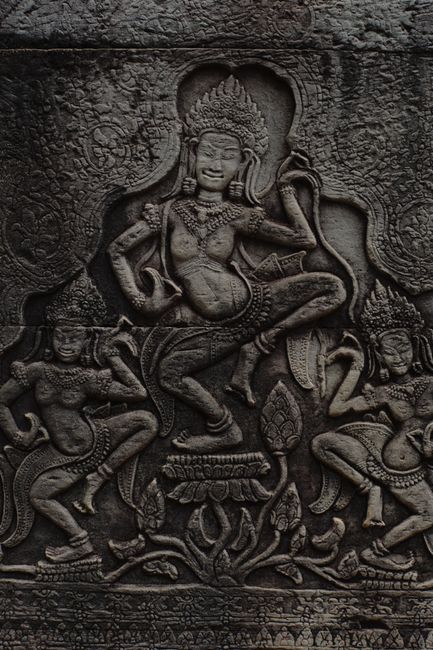
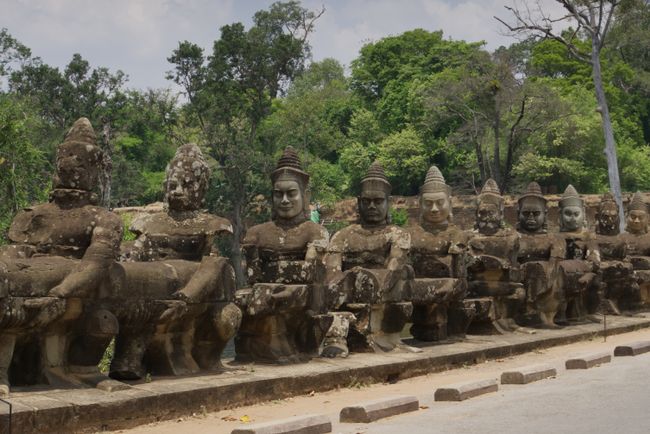
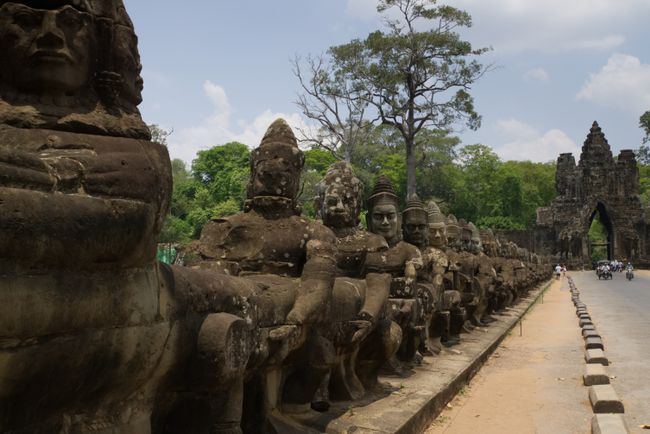
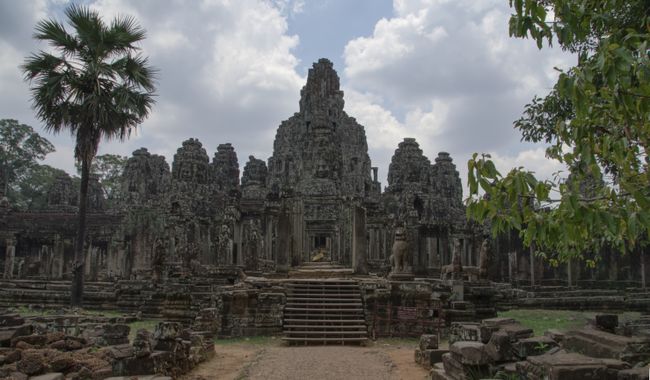
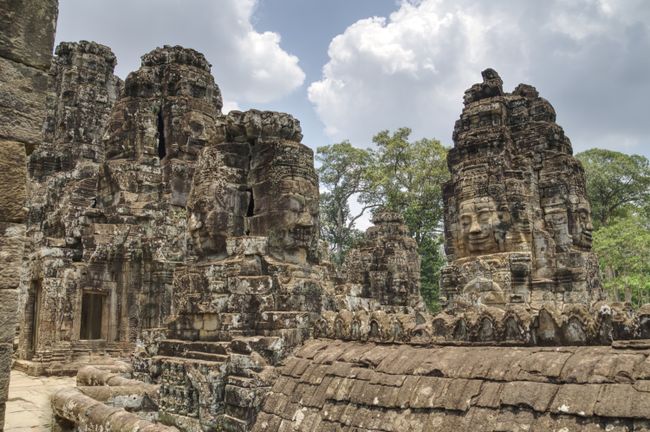
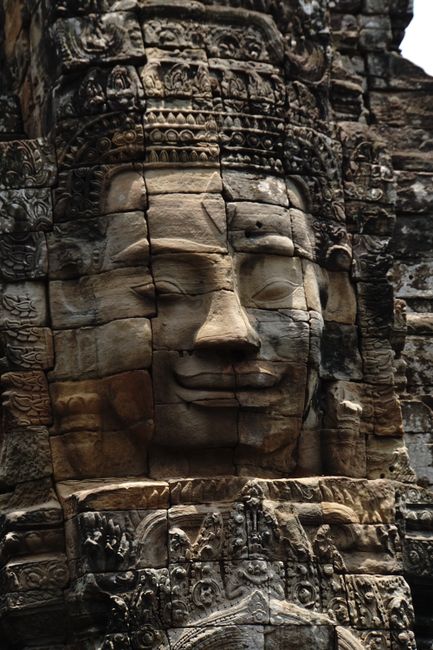
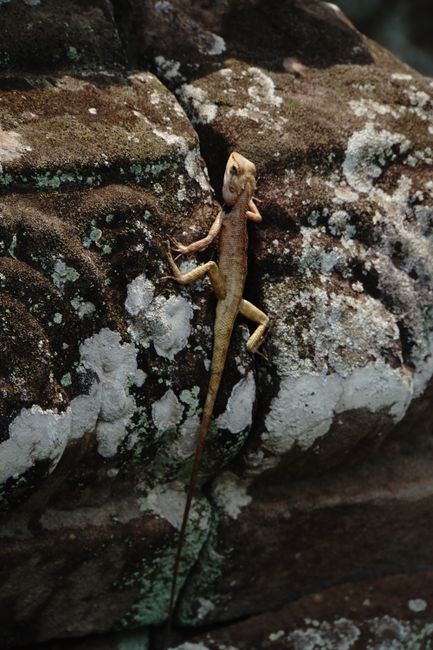
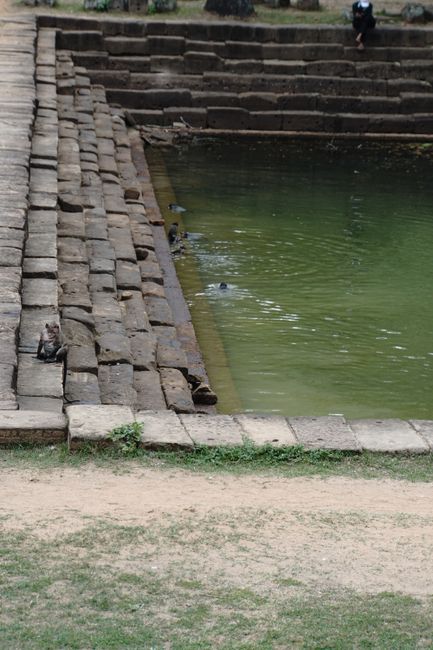
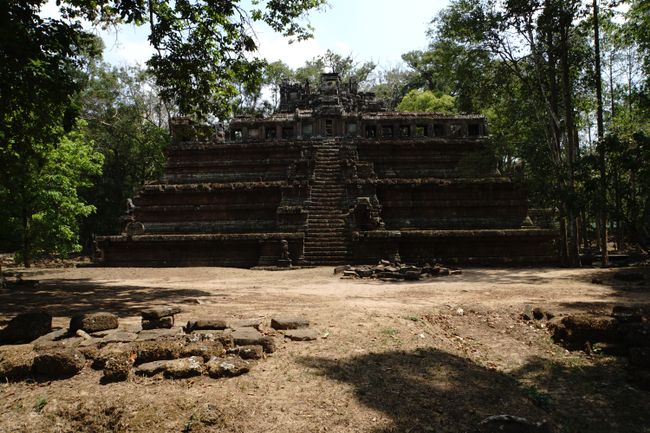
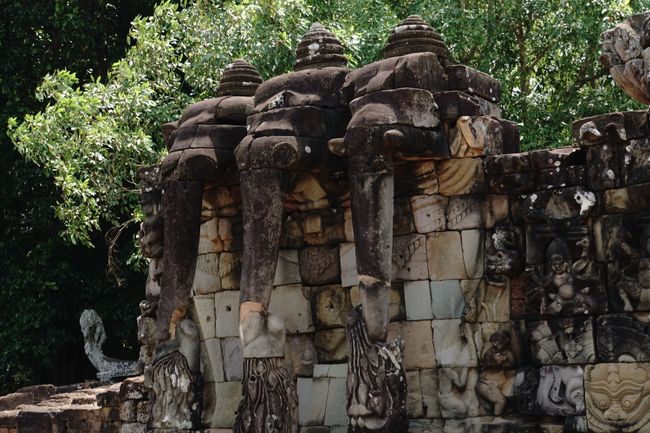
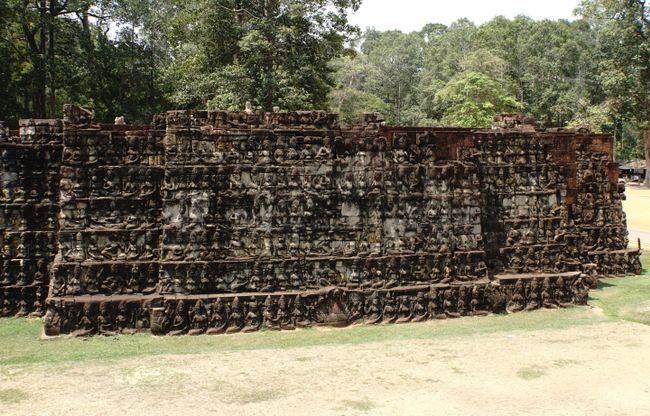
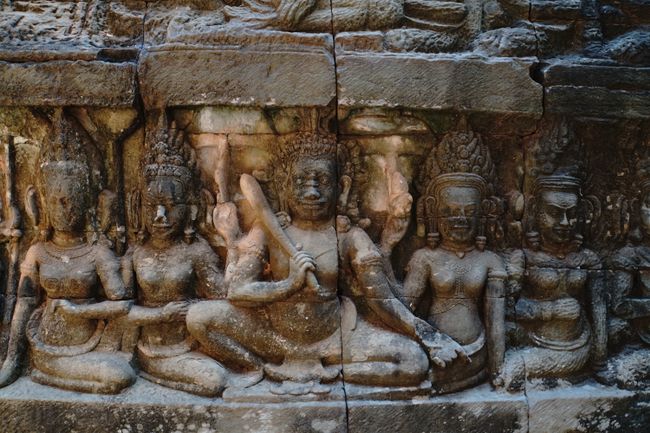
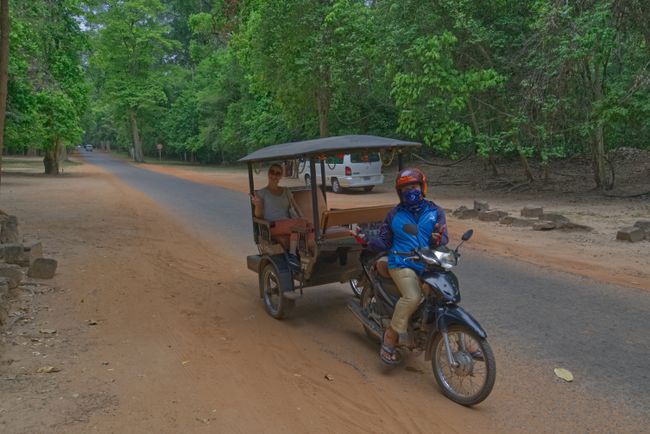
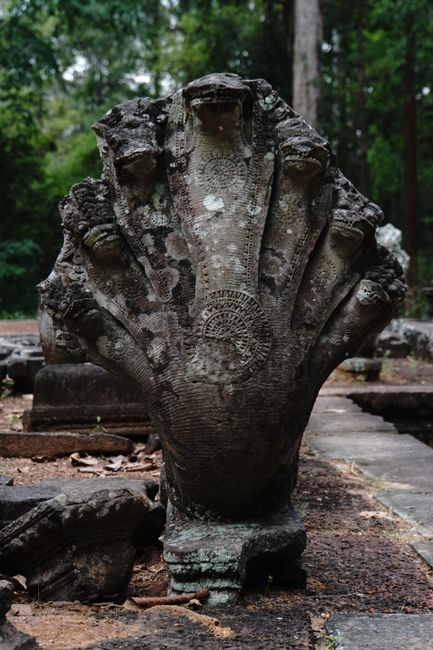

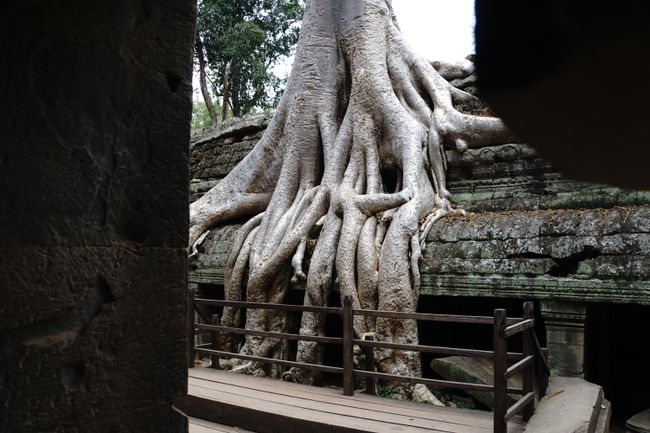
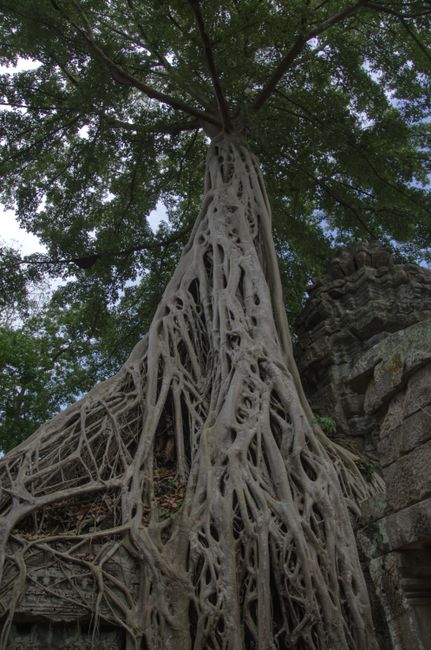
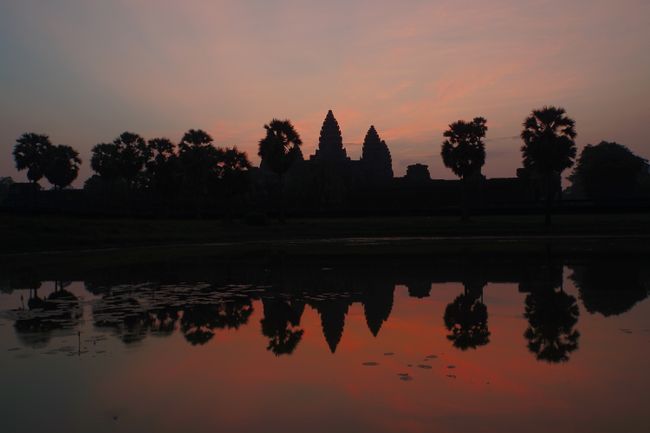
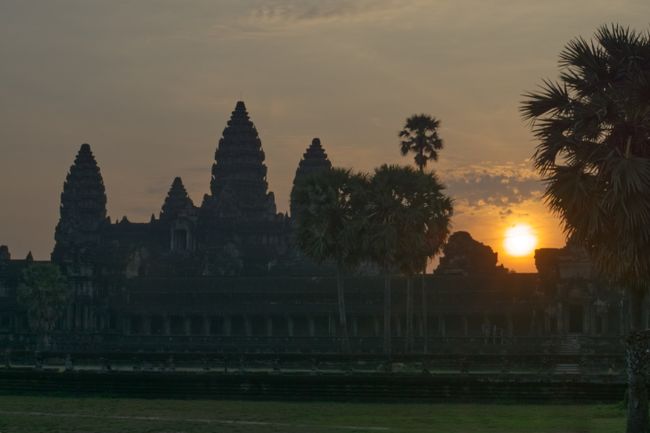
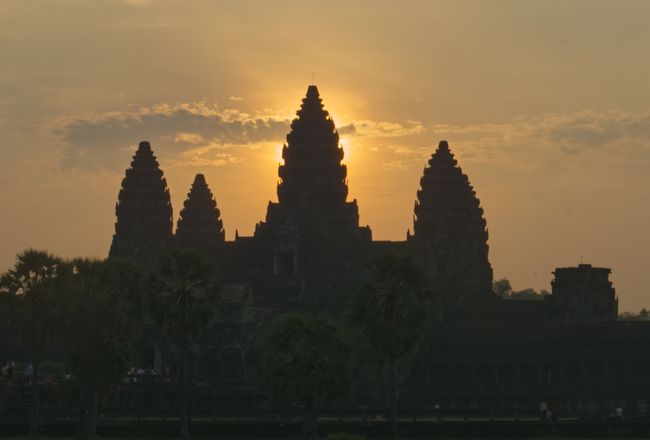
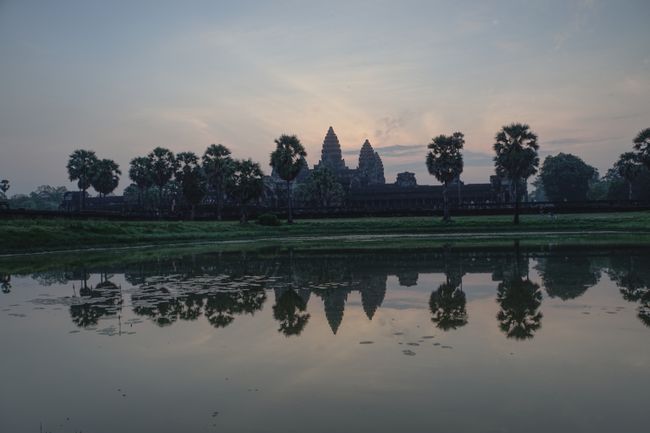
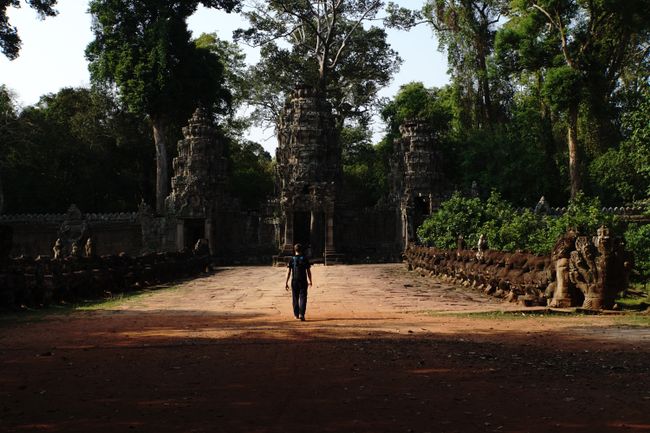
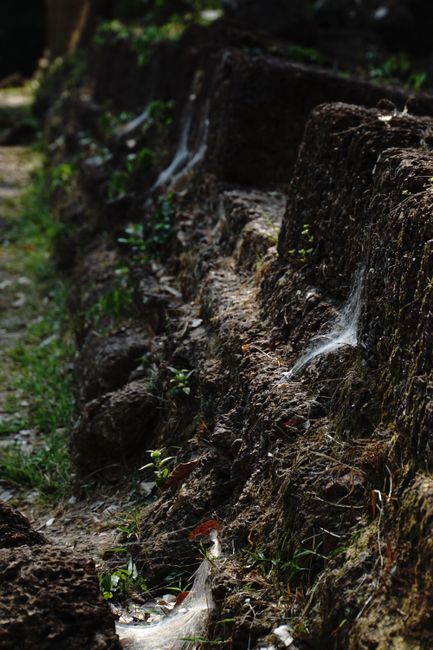
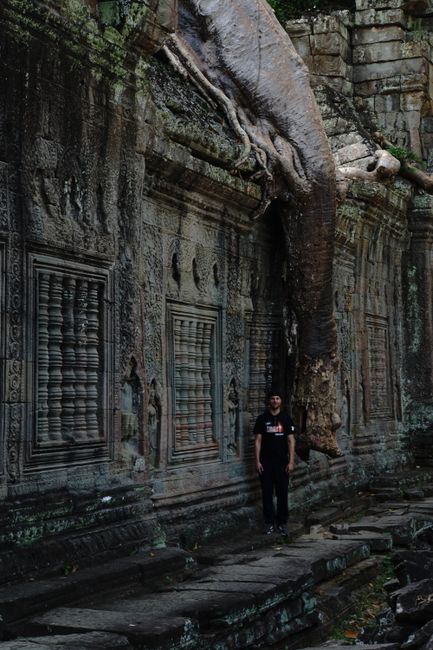
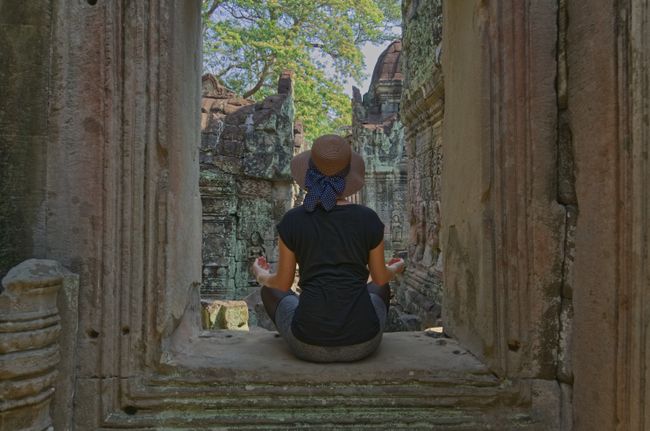
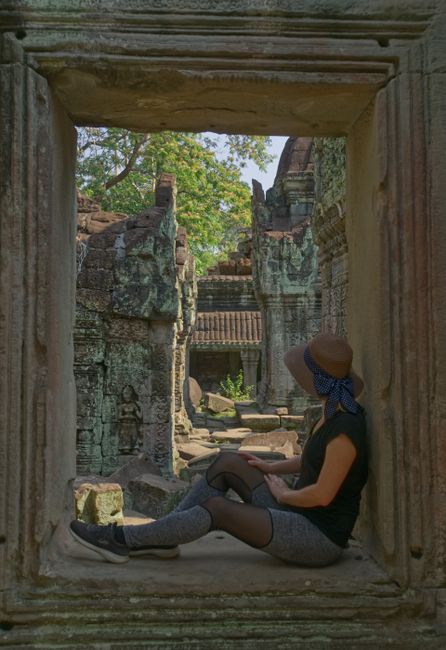
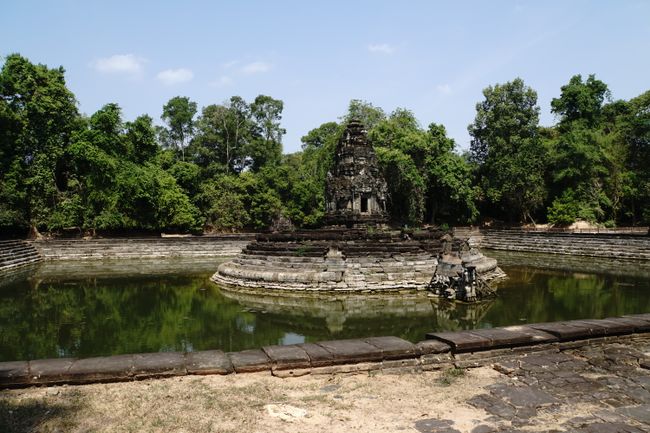
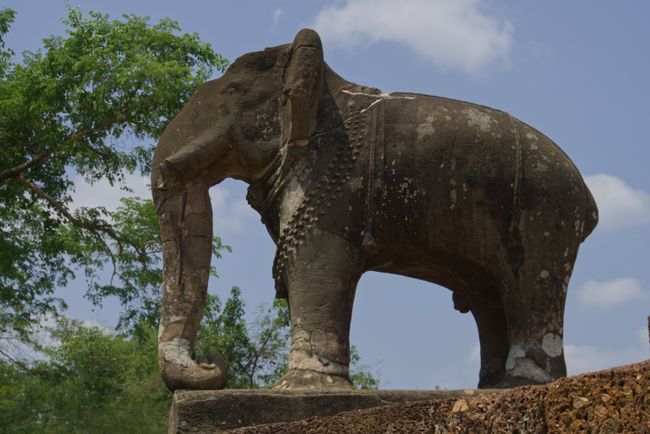
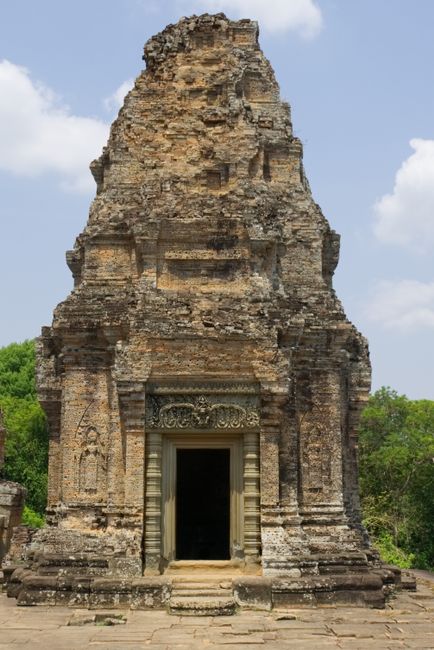
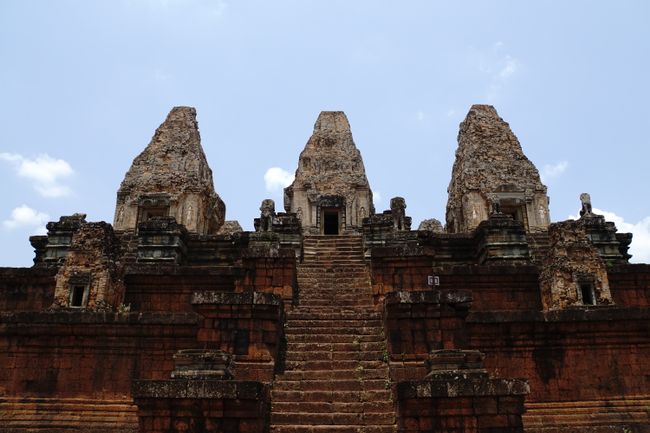
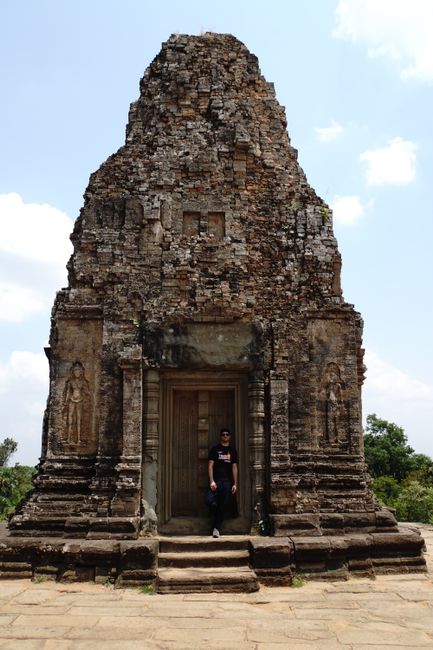
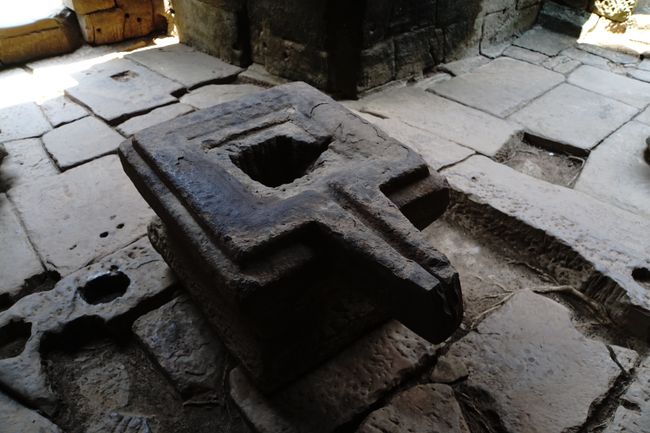
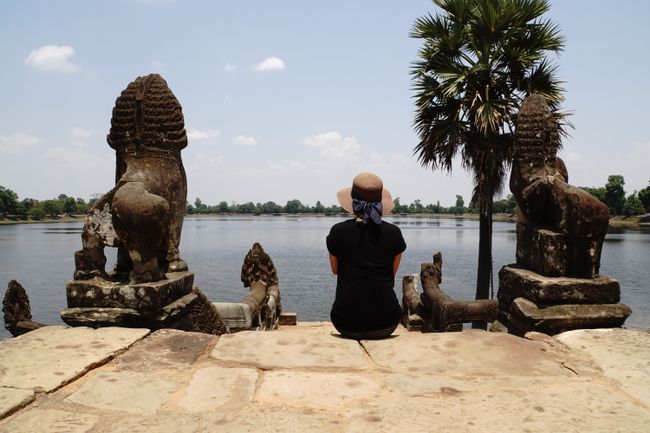
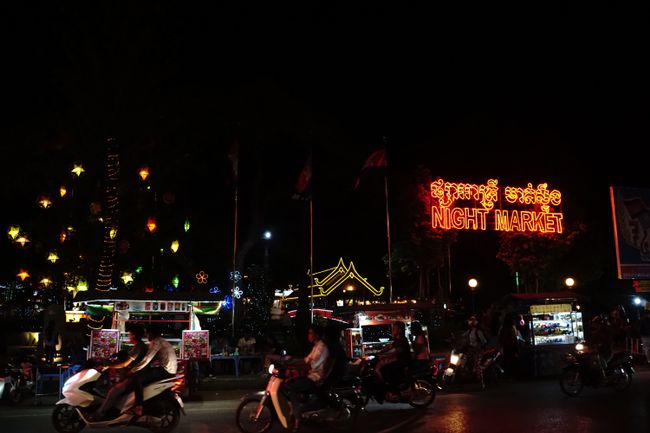
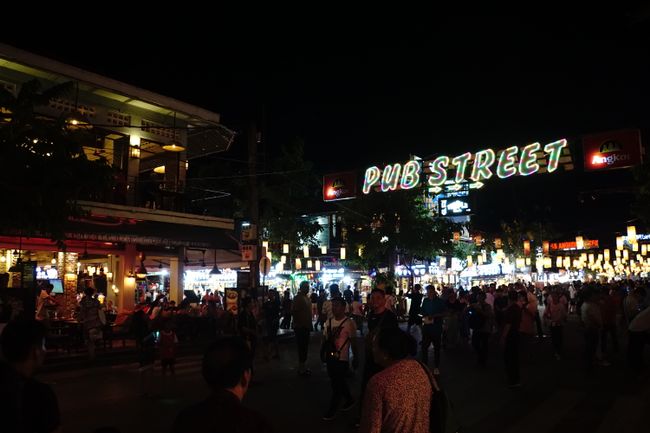
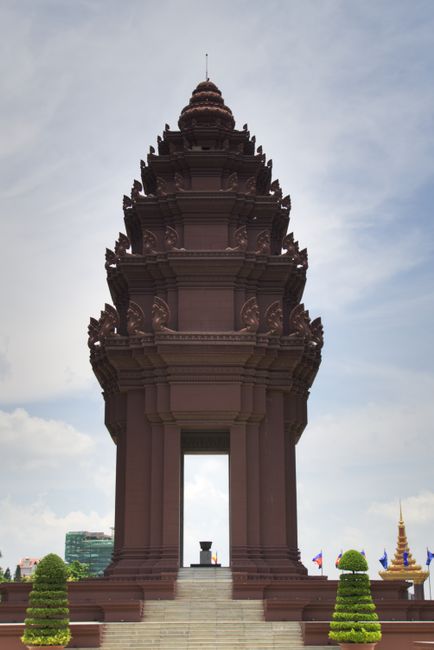
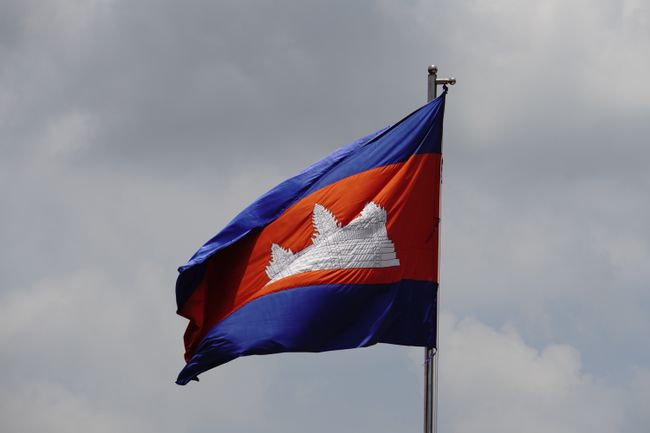
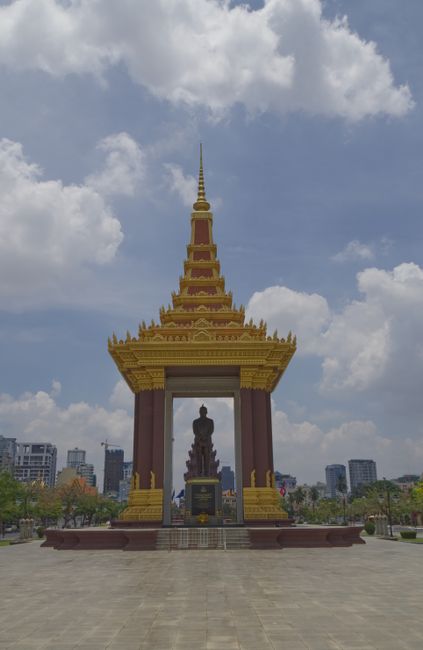
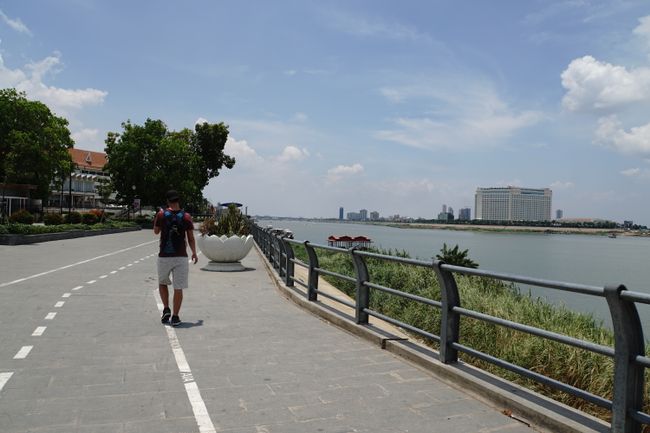
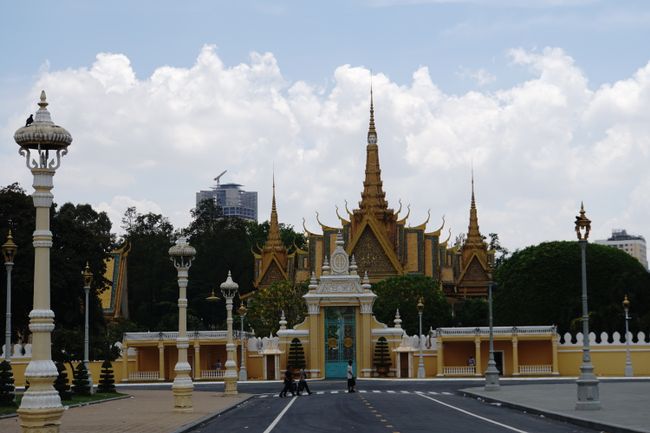
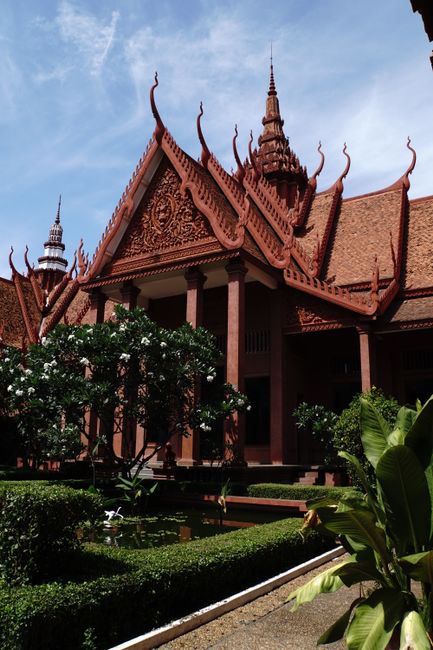
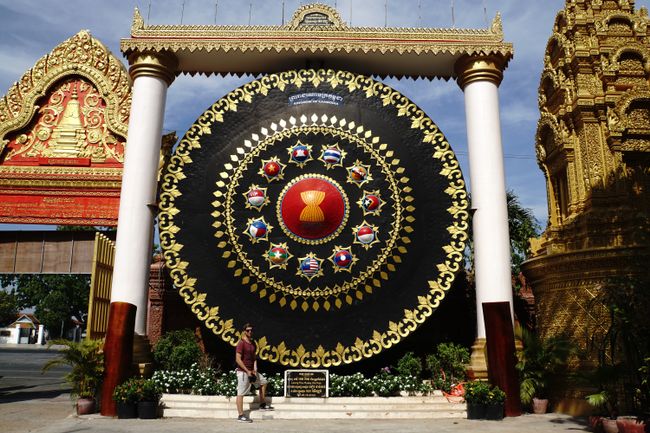
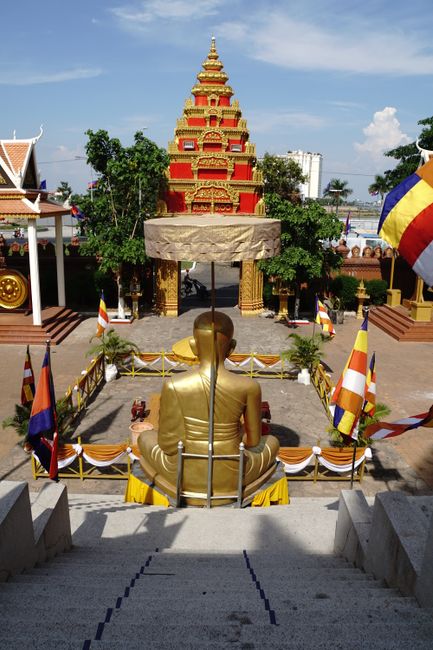
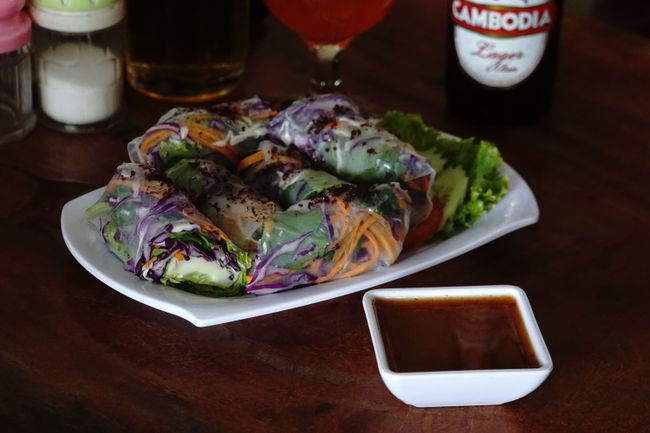
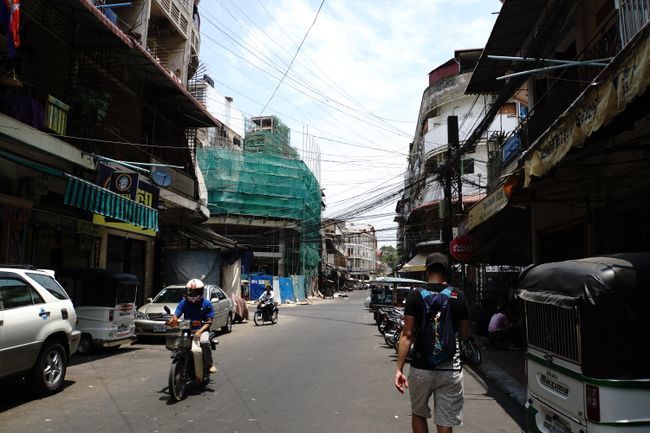
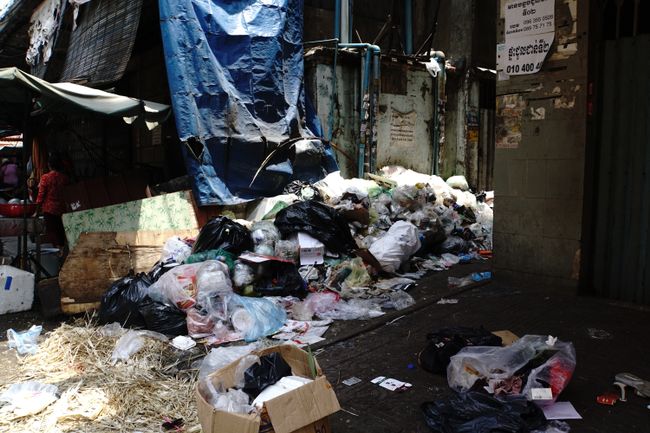
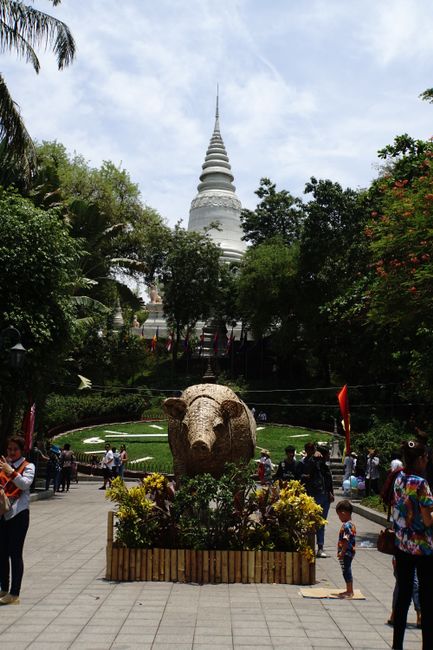
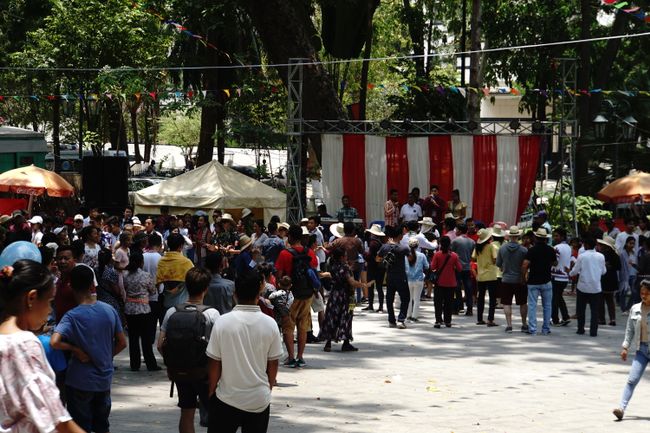
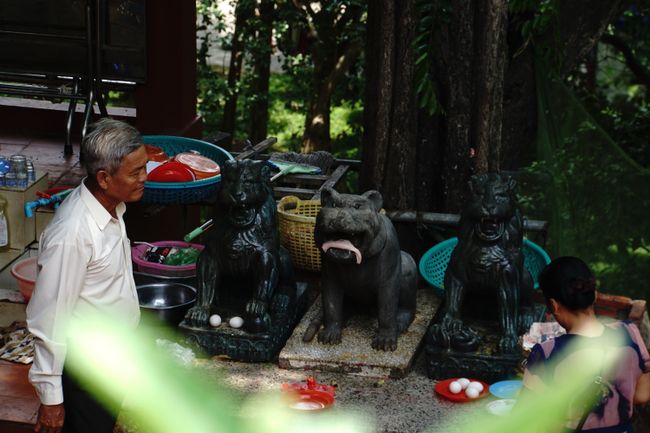

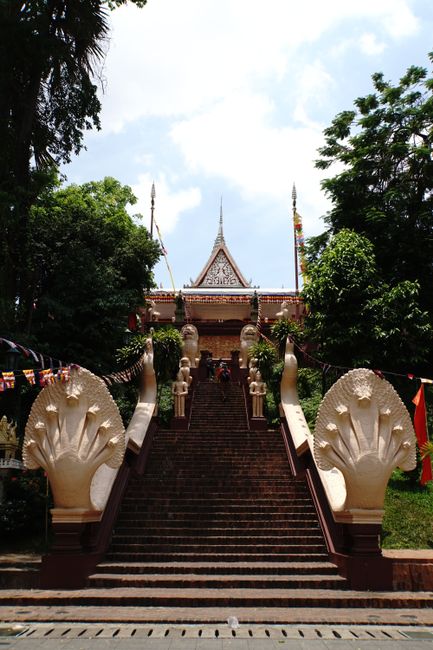
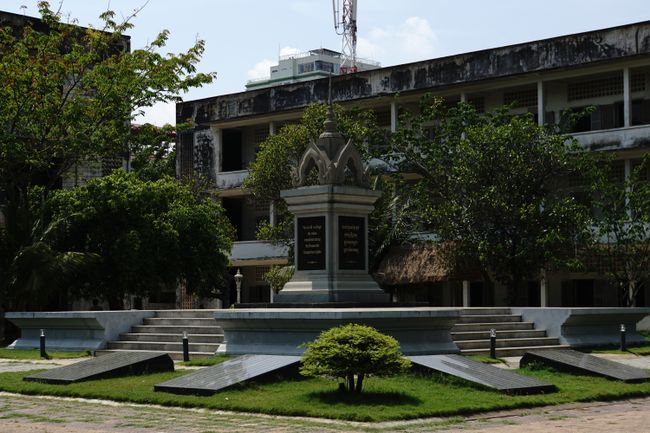
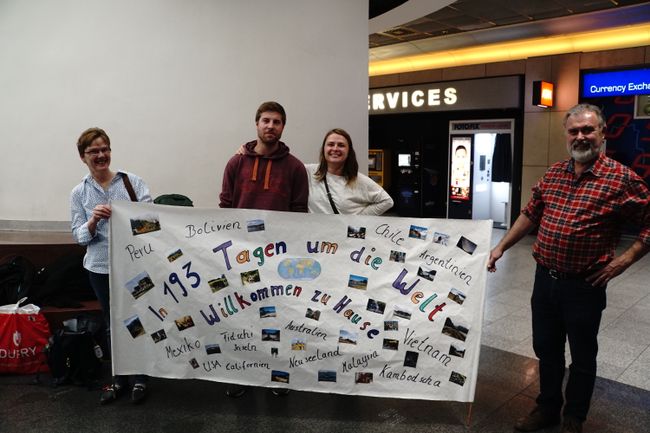
ニュースレターを購読します
Edit: Please excuse the long drought! We have now been back in Germany for several weeks. Between visiting family and friends and dealing with authorities and health insurance, we unfortunately did not manage to finish the last blog entry earlier.
Our last two stops before returning to Germany are Siem Reap, where we want to visit the temple complexes in the Angkor region, and Phnom Penh. After recovering from our Mekong Delta tour in Phnom Penh for a day, we book our trip to Siem Reap for the next morning. The bus ride takes about seven hours, with a one-hour lunch break at a restaurant on the highway. When we arrive in Siem Reap, we are immediately swarmed by tuk-tuk drivers at the bus station who offer to take us to the hotel for $5. It is already 5pm and we are disappointed to find that the air-conditioned room we were hoping for is not available due to a power outage. We later learn that this happens more frequently towards the end of the dry season, as the reservoir that supplies the hydroelectric power plant does not have enough water. The hotel staff hopes that the power will be restored within the next hour. In the meantime, we pass the time by jumping into the pool to escape the humid heat. After an hour, the power still hasn't come back and it is already dark, which invites mosquitoes, so we take a shower and set out to find something to eat. We are simply told to walk down the street and cross a bridge, and we will find something. And indeed, from afar we can already see and hear the party mile in downtown Siem Reap. The streets are brightly lit with colorful lights of all kinds and sizes, loud music is playing from numerous restaurants and cocktail bars, and thousands of tourists are mingling in the alleys under the lanterns and chatting on the restaurant terraces. We are truly amazed. We least expected something like this here!


We're not very hungry and settle for a kebab from a street stall. Who can say they've eaten a kebab in Cambodia? For dessert, we have some ice cream. Back at the hotel, we go to bed early because the next morning we are picked up by our tuk-tuk driver to visit the temple complexes in Angkor.
By now, over 1,000 temples and sanctuaries have been found in Angkor on an area of 200 km². Researchers believe that the area was as large as 1,000 km² at its peak and could have been home to a million people. The Khmer Empire existed from the 9th century to the 15th century. Why Angkor was abandoned in the 15th century is unknown. The entire Khmer Empire was then referred to as Kambuja, from which the current name Cambodia derives, and must have been quite impressive. The Khmer built elaborate and huge artificial water reservoirs (barays) and canals to irrigate their fields and supply the cities with water. The flourishing agriculture and exports allowed the development of an impressive high culture at a time when the largest city in Europe had only 200,000 inhabitants (Paris around 1450).

Rhota, that's what our tuk-tuk driver is called, is punctual and so we leave a little earlier than planned to buy a three-day ticket for the temple complexes. Roughly speaking, there are two 'classic' routes for visiting the temples. The Big Circuit and the Small Circuit. Both circuits gradually visit various temple complexes. The first day is the big circuit, and we start with the most famous and largest temple complex in the world: Angkor Wat.

Our tuk-tuk driver Rhota with Laura
A wat is a complex of buildings surrounded by a wall and mainly serving religious purposes. Angkor Wat is surrounded by a moat up to 190m wide, which encloses an island with an area of 1.3km x 1.5km. According to prevailing interpretation, the moat represents the primordial ocean. The highest tower of Angkor Wat stands at 65m in the center of the temple, forming the central sanctuary and representing Mount Meru (Himalayas), where the gods reside in Hindu mythology. The four additional towers correspond to the mountains that surround Meru, and together with the central tower, they form a quincunx (meaning they are arranged like the number five on a dice). The worldview reflected here corresponds to that of Hinduism. However, the Khmer turned to Buddhism in the 13th century, which is why many Buddhist symbols and figures can also be found in the temple complexes. Archaeologists believe that this temple was built while King Suryavarman II ruled over the Khmer Empire from 1113 to 1150.


Shortly after the moat, we have to walk through a gallery to get to Angkor Wat. There you can admire various reliefs of dancing apsaras and devatas. The reliefs impress with their detail and the delicacy with which they were made. Apsaras are semi-human, semi-divine beings and are compared to the nymphs of Roman and Greek mythology, as they are often referred to as spirits of water or clouds. Deva are semi-gods or celestial beings who exist on higher levels than humans.

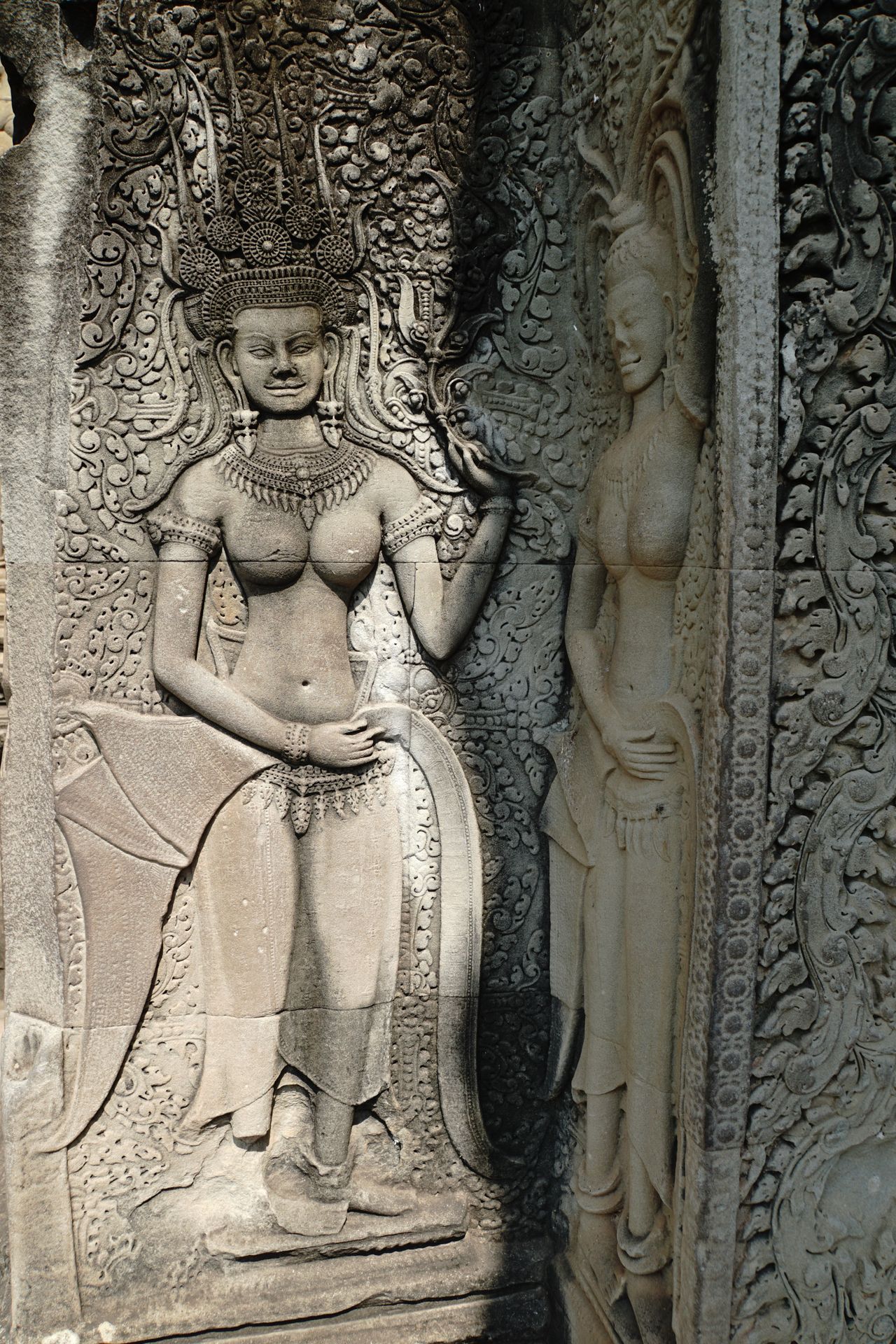
We overhear a guide who is leading a tour through the gallery mention that several thousand slaves were employed for several years to build this temple. We make our way to the main attraction: the towers of Angkor Wat. From up here, we have a great view of the entire complex, which is much larger than it appears from the outside.
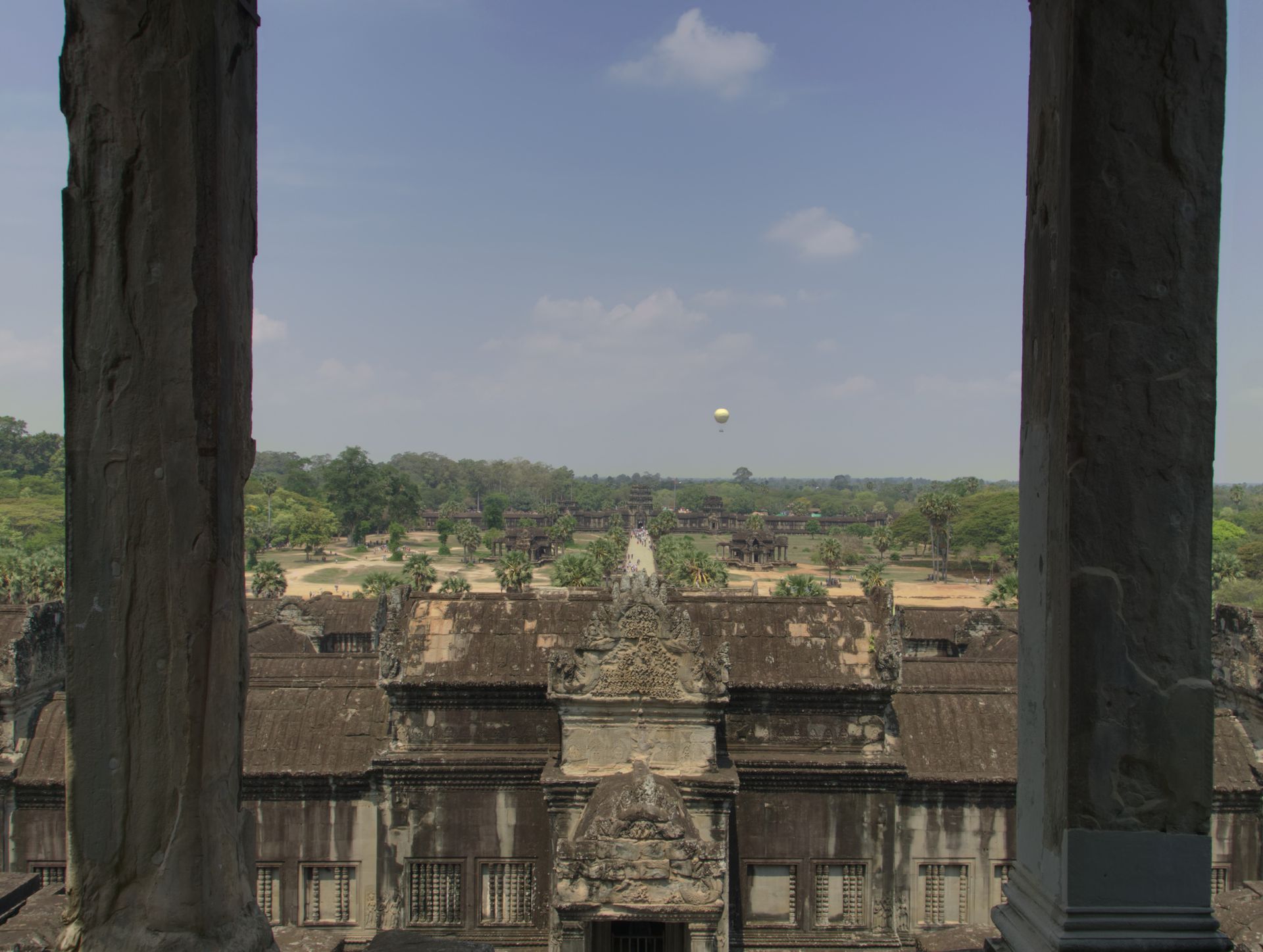
The next temple on our list is the Bayon. Both of us found this temple even more impressive and mysterious than Angkor Wat. It is the main temple of the former capital Angkor Thom of the Angkor Empire and was built in the late 12th century. The 9 km² city of Angkor Thom is about 1 km away from Angkor Wat and is surrounded by an 8m high stone wall. On the way to Bayon, we pass the impressive South Gate, flanked by large devas and asuras carrying a naga - a snake creature. The asuras (Sanskrit: demon) are the antagonists of the devas in Hindu mythology.

The Bayon currently has a total of 37 towers (originally 49 or 54 towers), each equipped with a stone face on all four sides. According to records of a Chinese diplomat (one of the few writings that provide insight into the Khmer Empire at that time), the towers were once gilded. And the idea that all the towers of this imposing temple were once covered in gold really blows our minds!


The two temple complexes Angkor Wat and Bayon, along with the Ta Prohm Temple, are the most famous temples in Angkor. Ta Prohm gained fame in 2001 through the movie Tomb Raider and is still very popular with many visitors. What is impressive about this temple are the trees that have been growing on the temple's masonry for centuries, enclosing it with their roots.



In the evening, we taste typical Cambodian dishes for the first time. We have Lok Lak (tender beef strips on salad with a lime-pepper dip) and Amok (tender fish steamed in a banana leaf and then covered with a coconut cream). We can highly recommend both dishes to anyone who visits Cambodia!
The next morning, we get up early to watch the sunrise at Angkor Wat with what feels like 700 other people. But it was definitely worth getting up so early! We see a fiery red sky above Angkor Wat.


We spend the rest of the day and the following day visiting more temple complexes. The complexes resemble each other a lot, but you can sometimes recognize major differences in construction style. This is due to the different architectural styles over the centuries and the prevailing religion at the time - Hinduism or Buddhism. We'll shorten this part a bit: you can see the different temples in the pictures, as it would be quite boring if we presented all fifteen temples individually in the text. In total, the temple complex impressed us more than anything else. And despite the incredible heat (around 40 degrees), we made full use of all three days of our ticket.
After visiting the temple complexes in Siem Reap and Markus eating lots of Lok Lak (it was just too good!), we headed back to the capital city of Phnom Penh. The timing of our visit to Phnom Penh was a bit inconvenient, as we arrived in Phnom Penh just in time for the Khmer New Year festival. The New Year festival lasts three days in Cambodia, and many people travel back to their villages to celebrate the festival with family and friends. As a result, Phnom Penh was very quiet. We were of course delighted about the calm traffic, as it was much easier to cross the streets! However, many shops and restaurants were also closed, and it was a bit more complicated to find something to eat or to find a restaurant that was open. We had the feeling that even the garbage collection was off duty, as there was trash scattered on the sidewalks and streets in many places, which unfortunately left a not-so-good impression of the city.
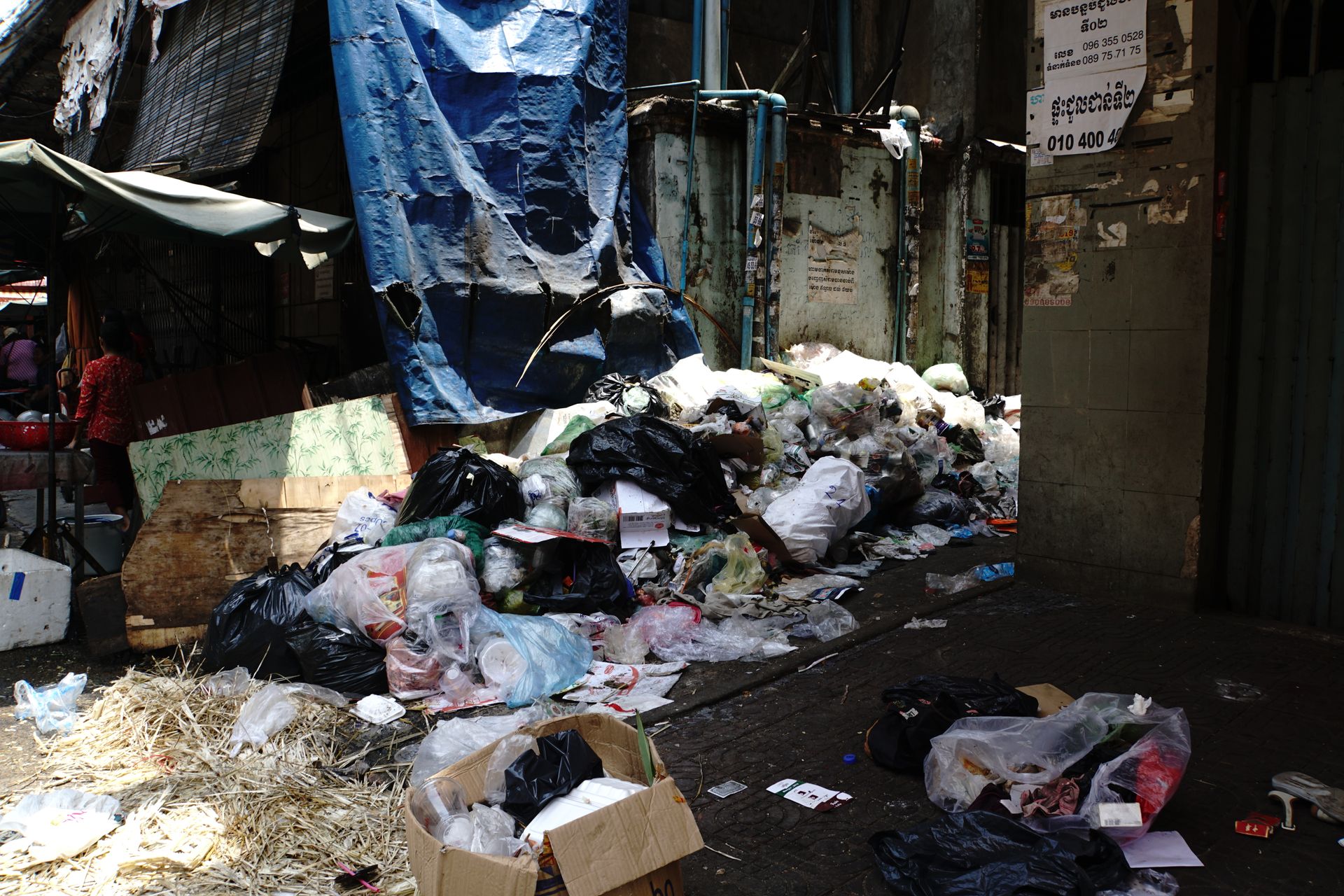

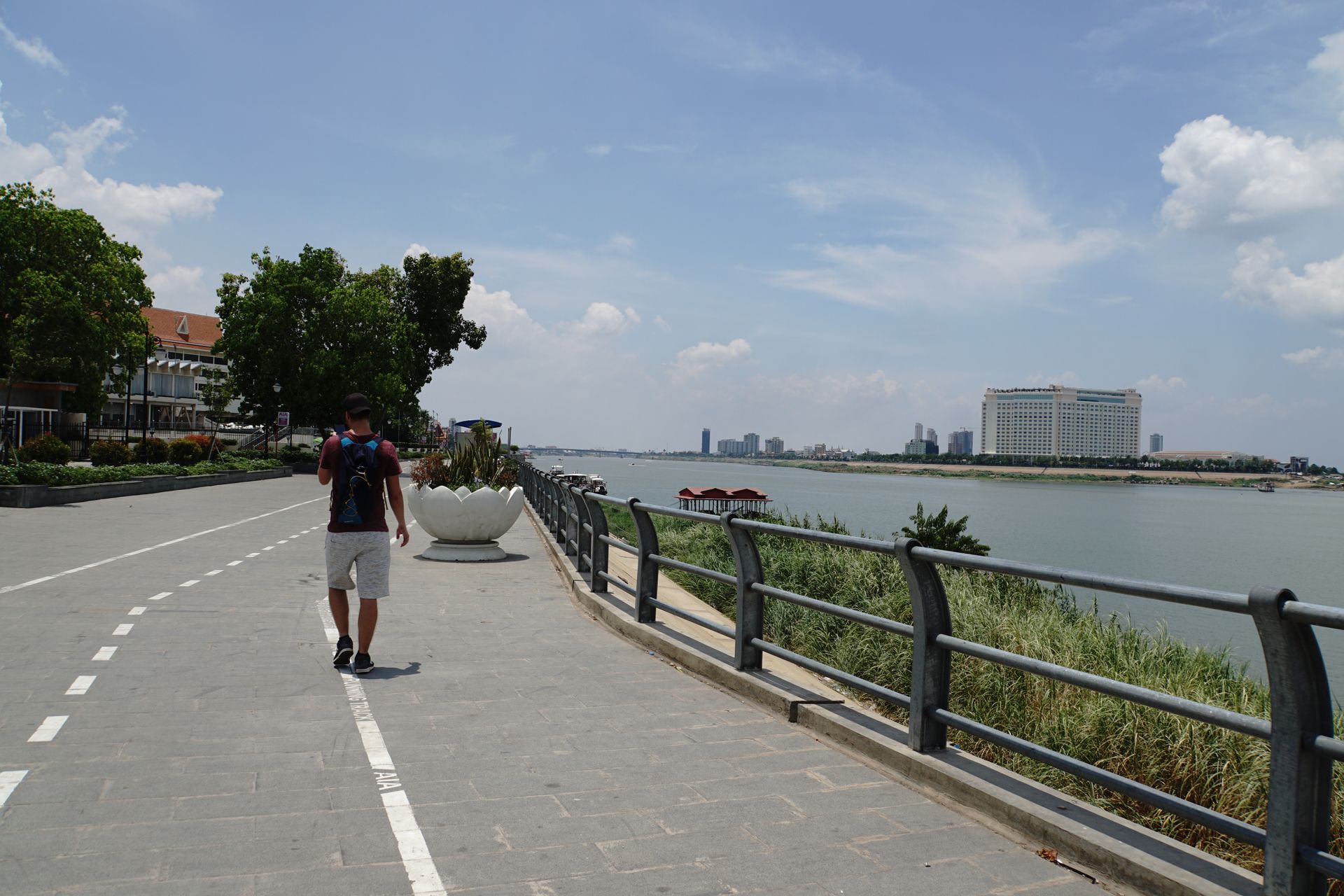
However, we do not let this discourage us and still explore the city in temperatures of around 38 °C. We even get a glimpse of the New Year celebrations at Wat Phnom, the temple after which the city is named. There, Cambodians dance, celebrate, eat, and drink with joy.
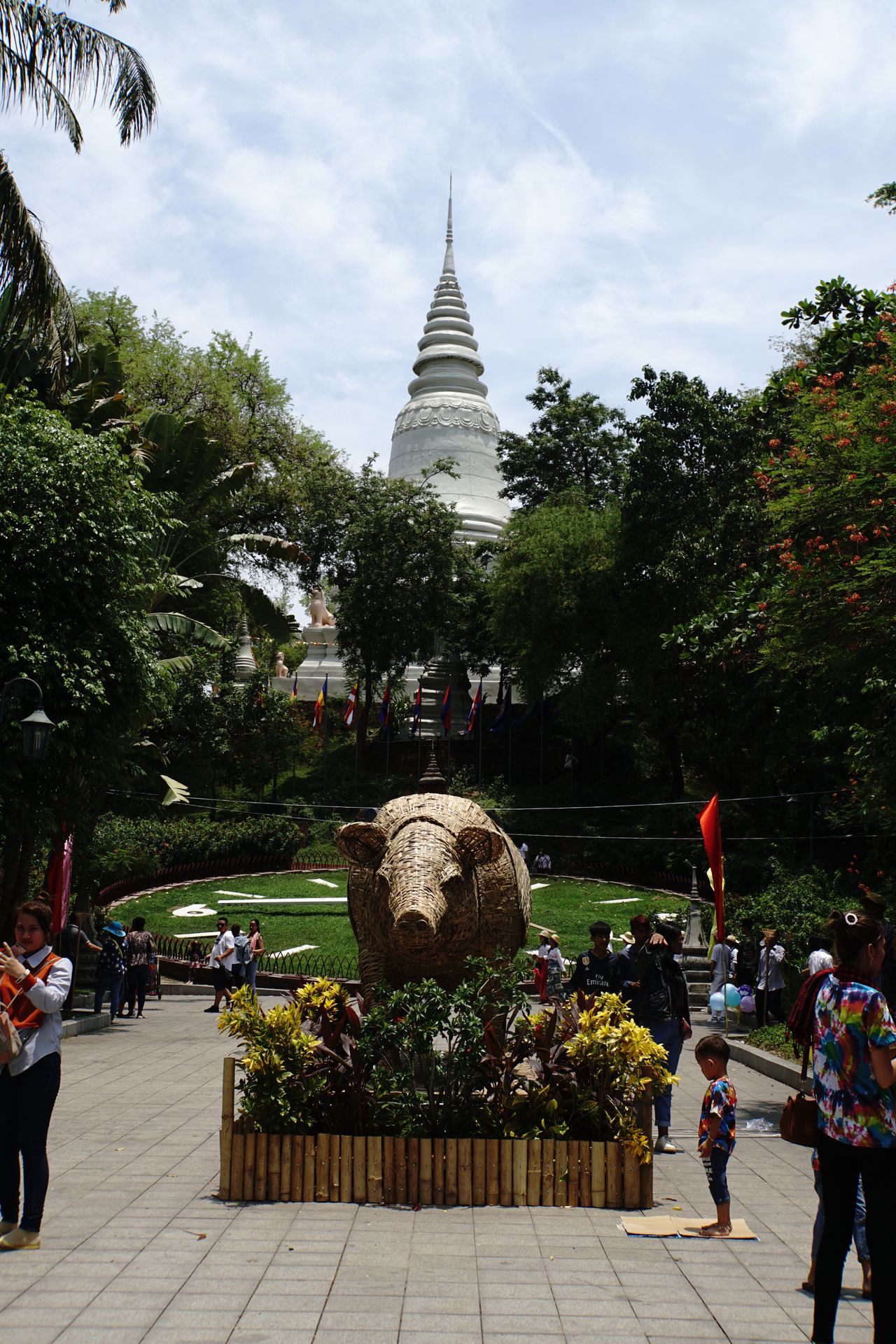

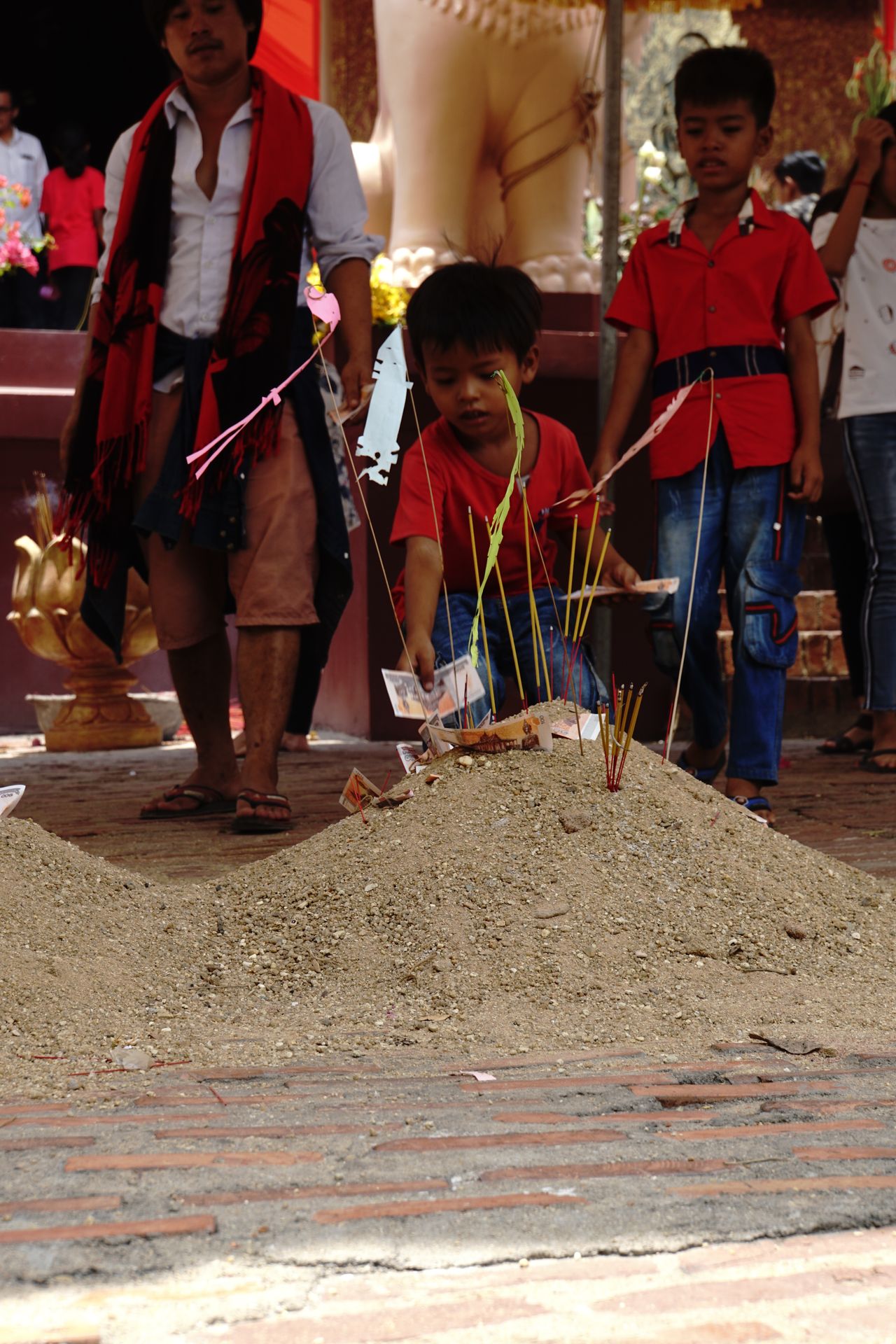
Afterwards, we visit the National Museum. It is housed in a beautiful building inspired by Khmer temple architecture. Here we can admire important archaeological finds from the Angkor region.
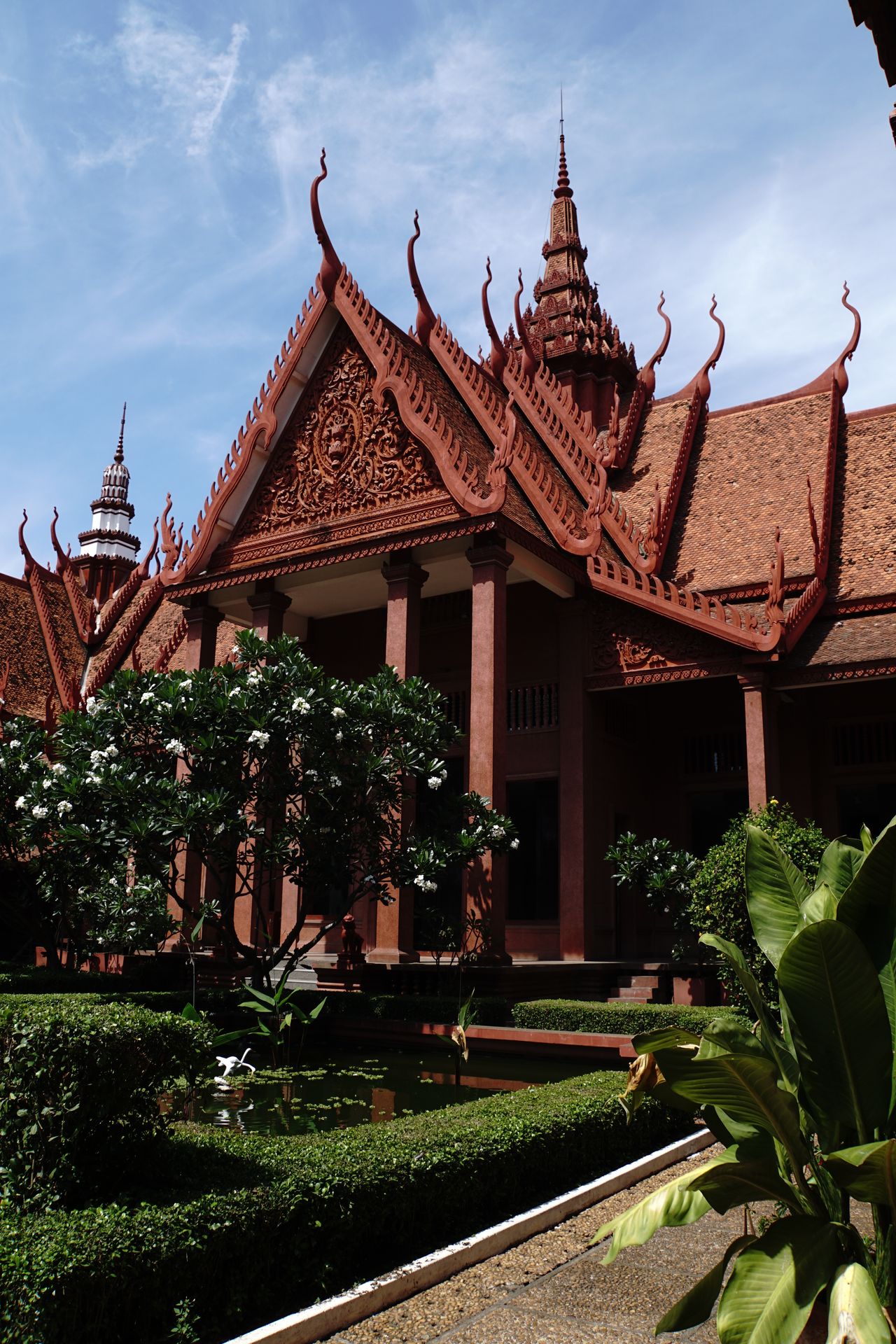
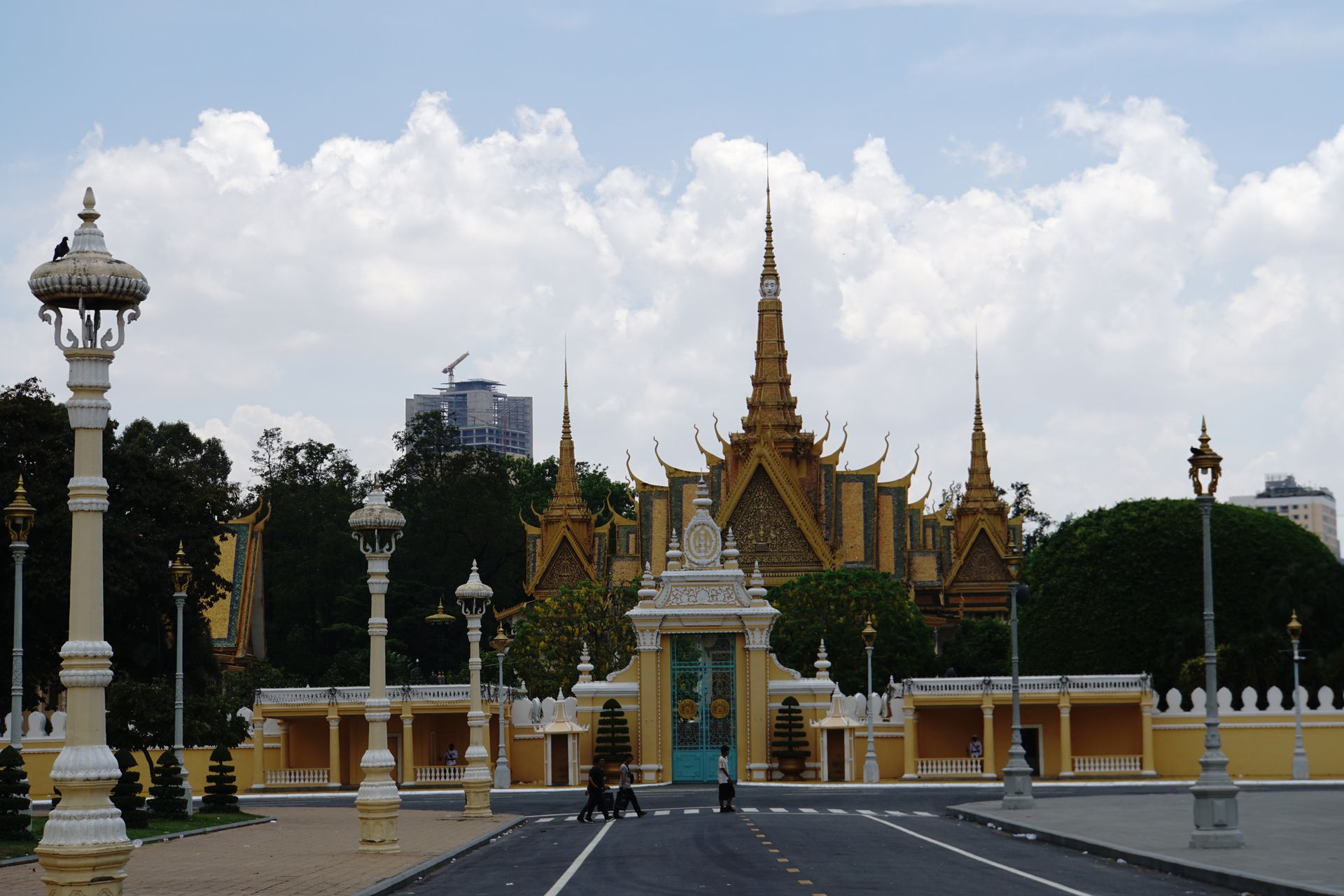
We visit another major temple in Phnom Penh, Wat Ounalom, as well as the Independence Monument commemorating Cambodia's independence from France in 1953. There is not much to tell about them, so at this point we will just show you a few visual impressions.
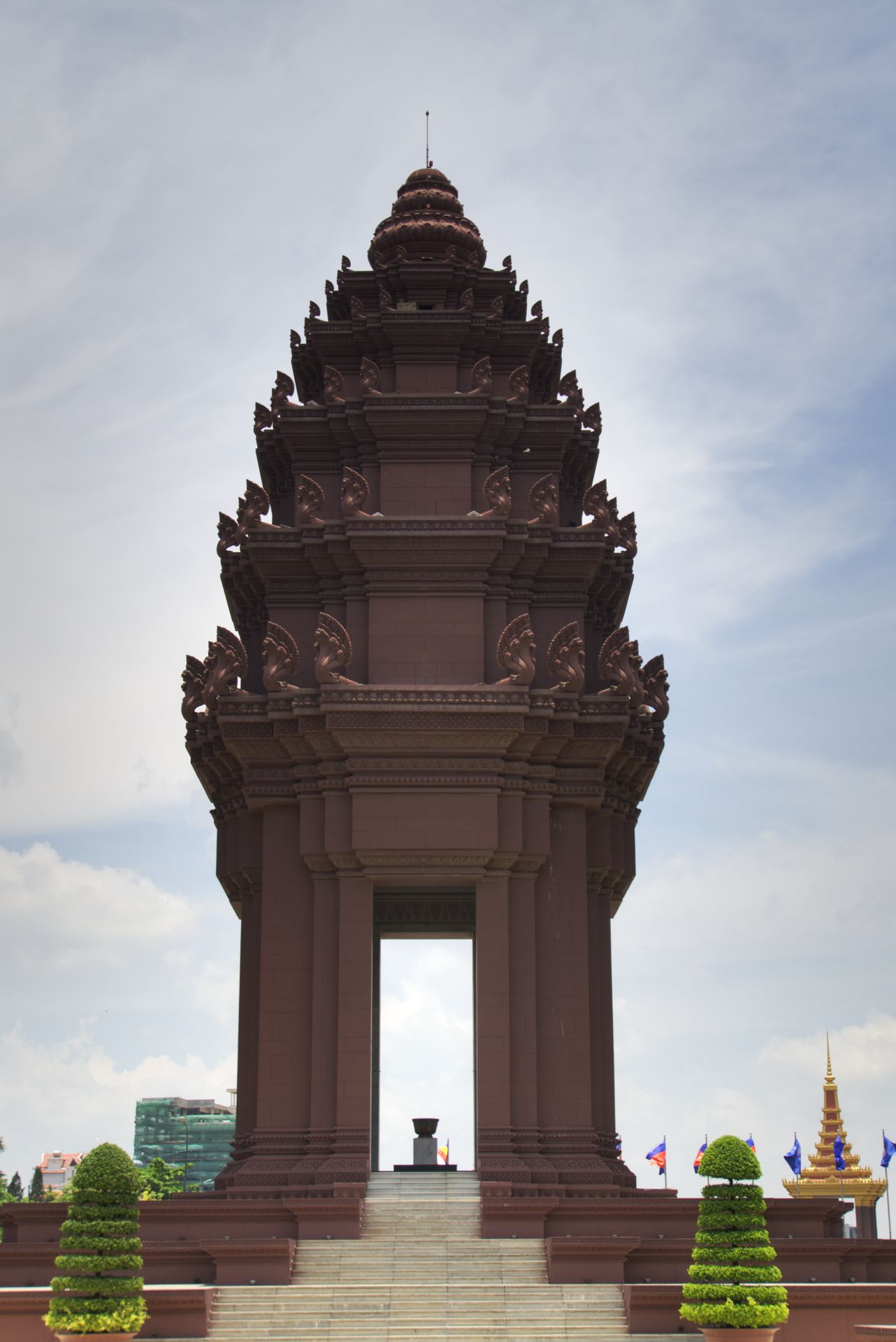
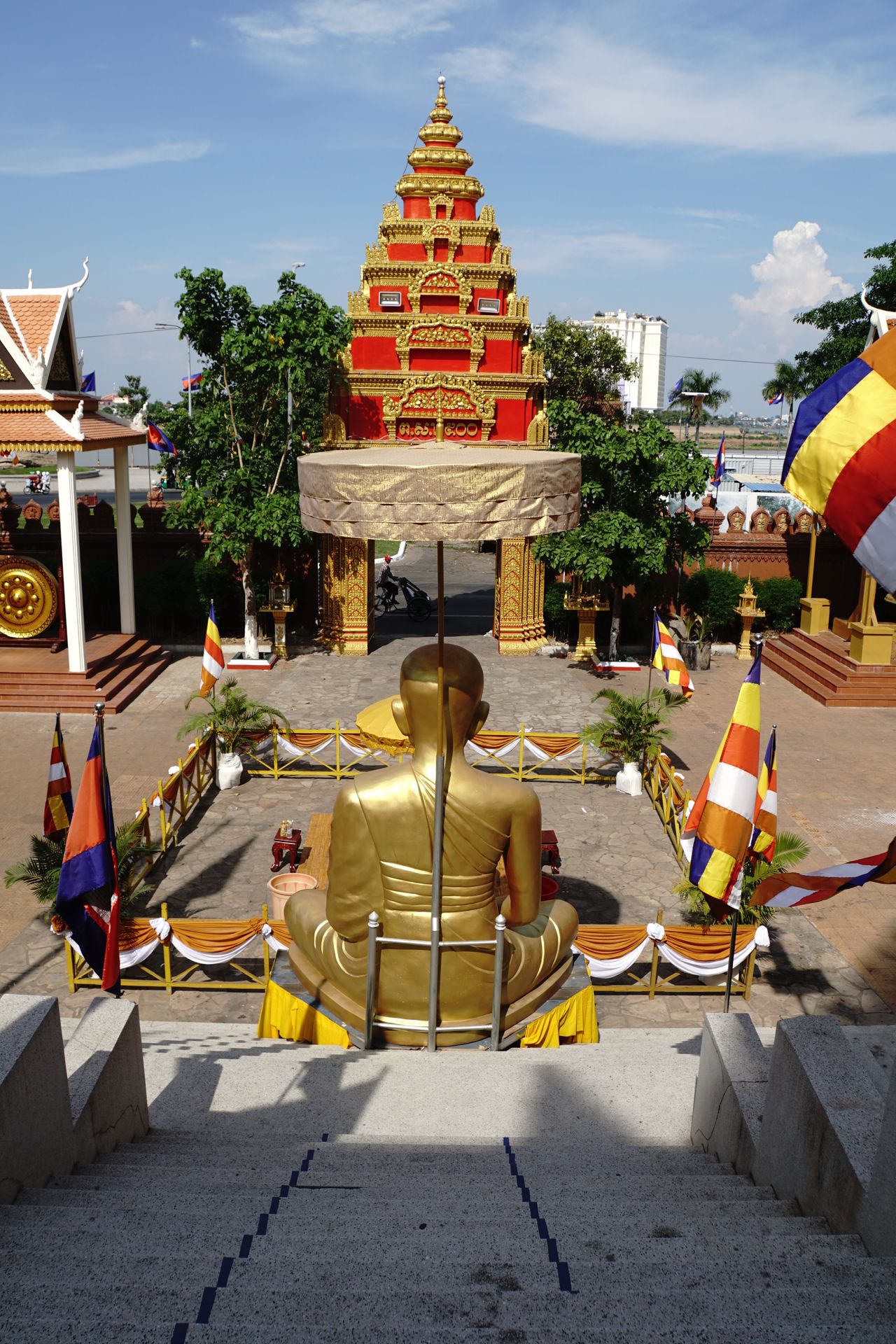

This museum visit affected us quite a bit, especially as the events took place less than 40 years ago. Anyone who has visited a concentration camp knows how much such a visit moves and depresses you. Nevertheless, it was important for us to better understand the history, as well as the country and the mentality of the Cambodians. The museum visit also explained why there are hardly any elderly people in Cambodia. Only few survived the reign of terror of the Khmer Rouge. The average age in Cambodia today is therefore only 24.9 years (compared to Germany with 42.1 years).
And so our journey comes to an end! It's incredible how quickly these six months have passed! The next morning, we board our flight back to Frankfurt, where we are greeted by Laura's parents, Markus's brother Christian, and our friend Kathi.

Now that our journey has come to an end and we have returned to Germany, we will continue with everyday life and the search for jobs. At this point, we would like to draw a conclusion of our trip. In the six and a half months, we visited a total of eleven countries. Some for a longer and more intense period, others for shorter trips (often just a few days due to connecting flights). We have gotten to know ourselves and each other even better and learned a lot about the different cultures in each country. We have met many nice people and like-minded travelers. In Germany, we have always been asked a question:
'Which country did you like the most?'
We simply can't answer this question! We liked it everywhere. However, different impressions from each country remain in our memory. South America and New Zealand impressed us a lot with their landscapes. We saw deserts, geothermal areas, Inca ruins, and animals that we had only seen on TV before. In Malaysia, Vietnam, and Cambodia, we especially remember the friendly people and the delicious food, as well as the impressive temple complexes in Angkor. The multi-day hikes also deserve special mention when talking to family and friends about our trip. Especially in Peru, the Salkantay Trek with Juli, the Santa Cruz Trek in Huascarán National Park, and the hike in Torres del Paine in Chile. These were incredible experiences that will stay with us for a long time! If we had the chance, we would do everything exactly the same again.
Now, we just want to say thank you. Thank you to all of you out there who diligently followed our blog, commented, and cheered us on. The entire project blog was a lot of fun for us, even though it was sometimes a lot of work. Just to give you an idea: we spent five to eight hours on average for a blog post, including selecting and editing photos. We hope that you noticed that! The blog will always remind us of a wonderful carefree time that we spent together. We have thought about it and decided that depending on the destination of our vacations in the future, we will continue to update the blog in order to preserve the memories of each vacation and relive them from home. So you are always invited to travel with us!
We hope you enjoyed following our journey as much as we enjoyed the journey itself.
Best regards
Your Laura and Markus
ニュースレターを購読します
答え
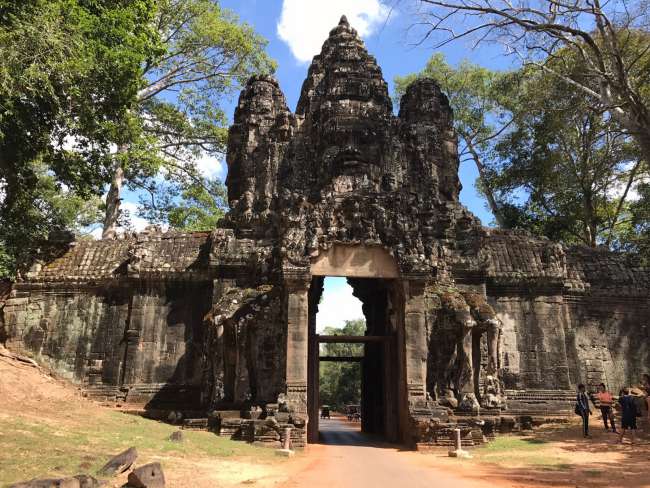
旅行レポートカンボジア
